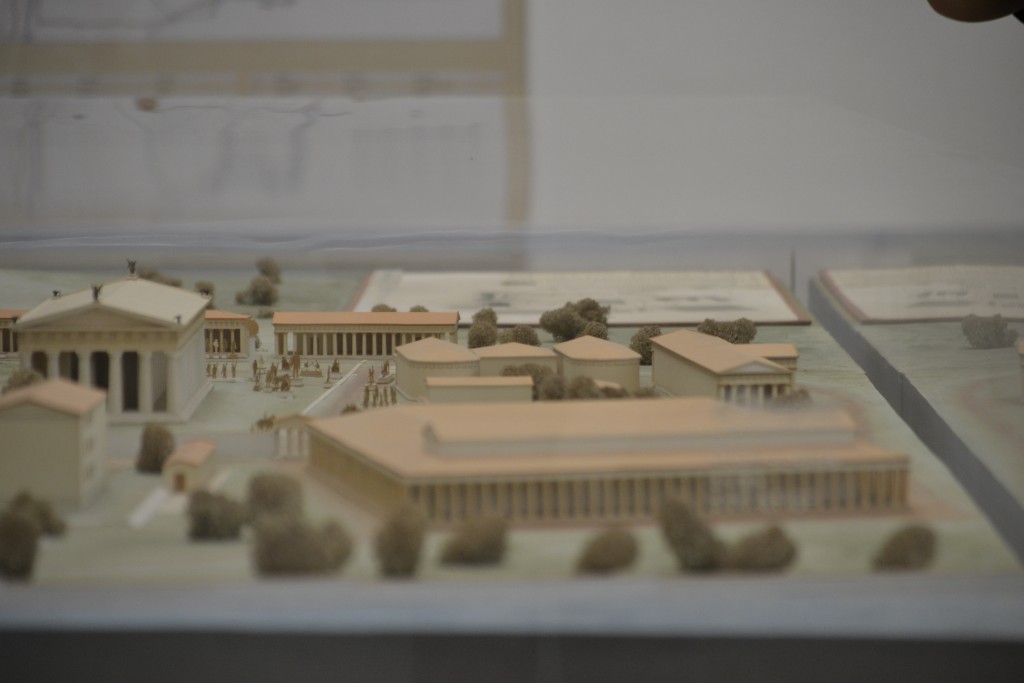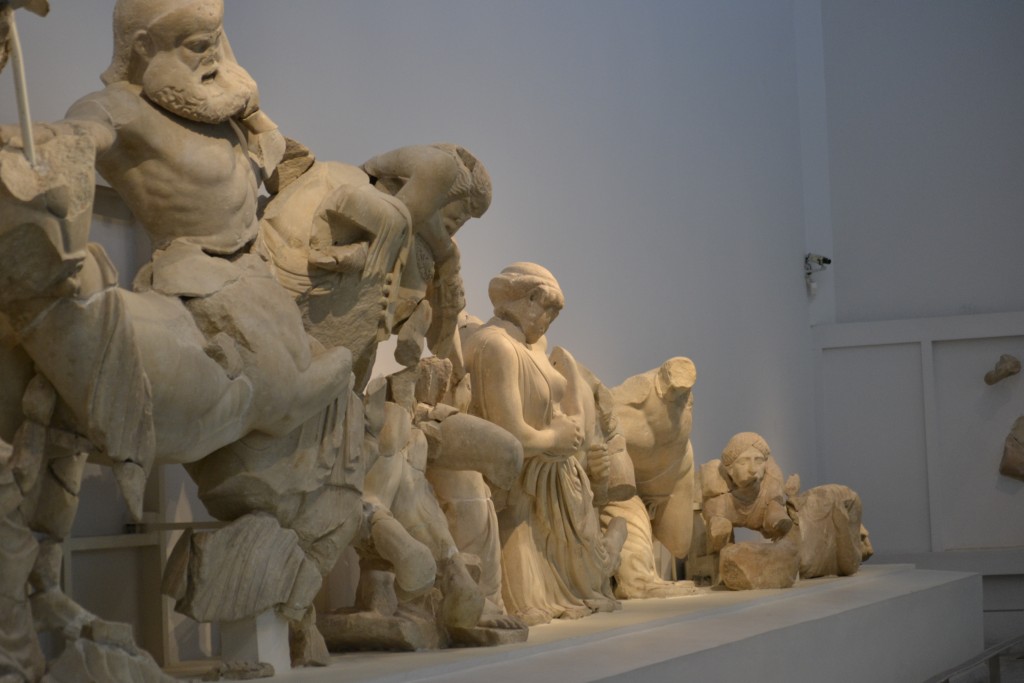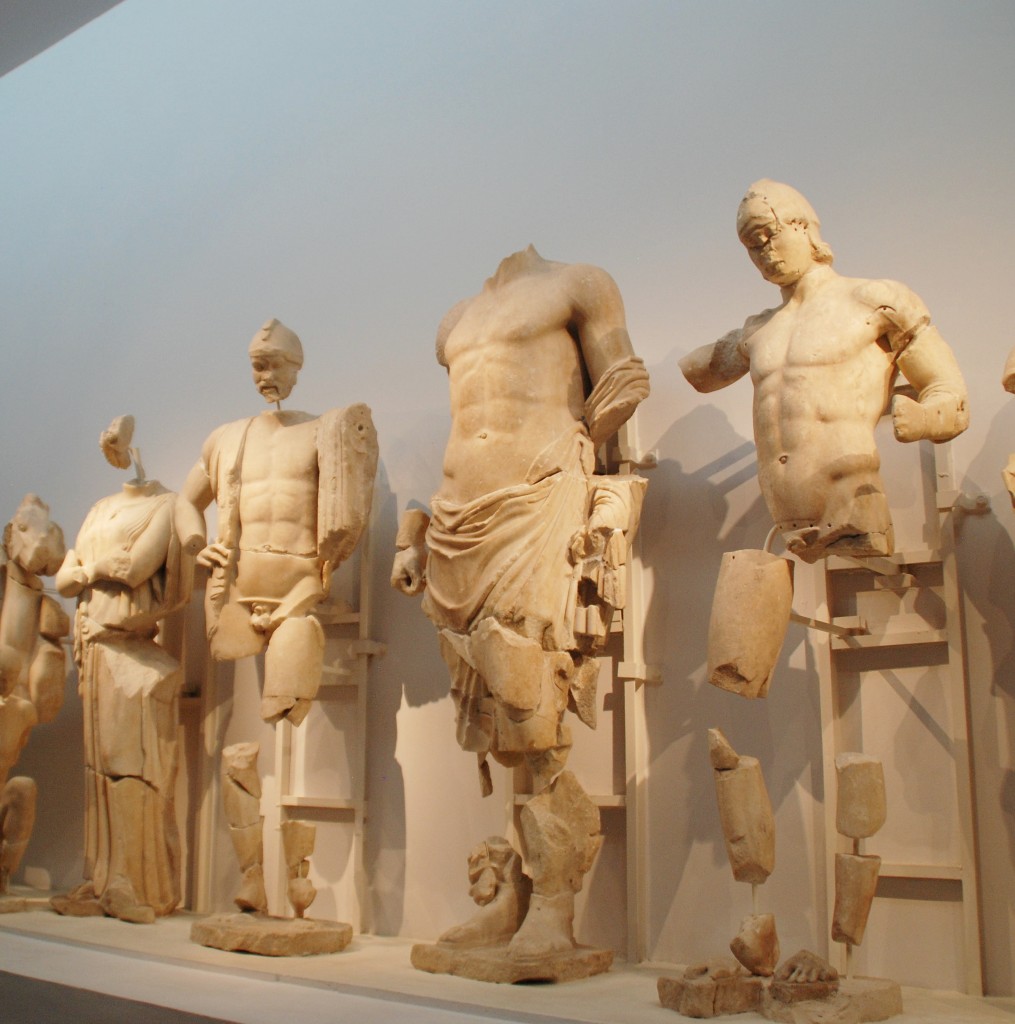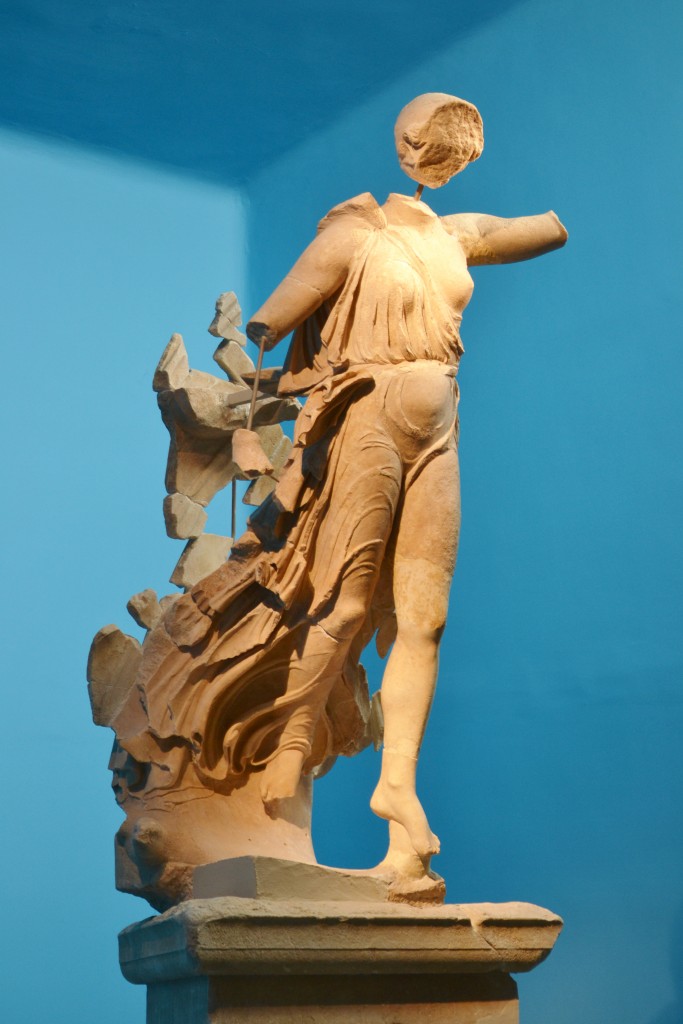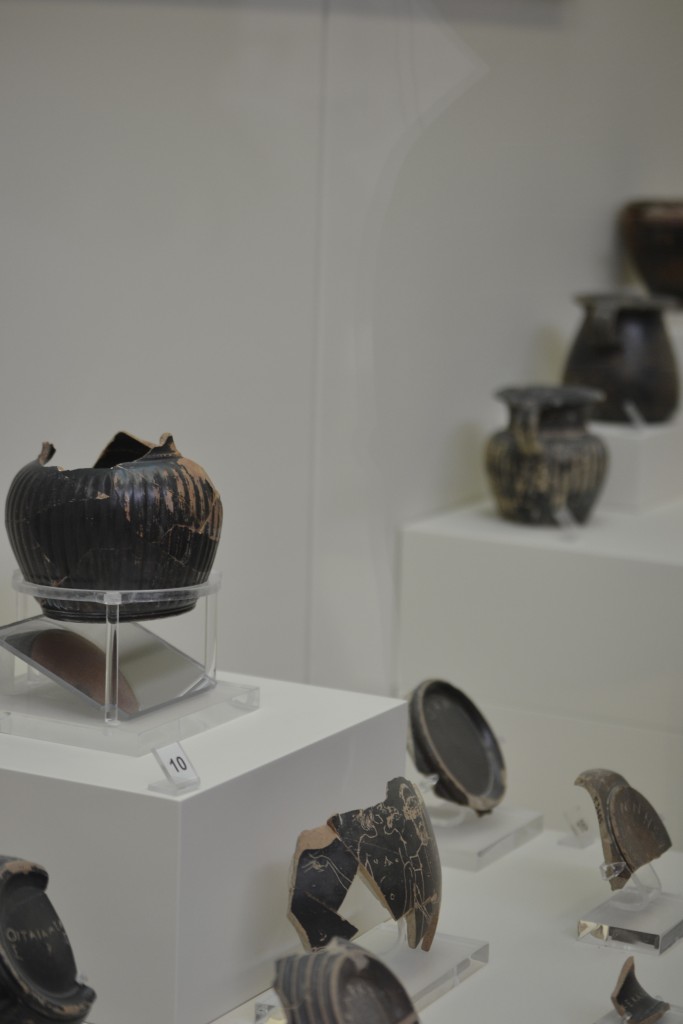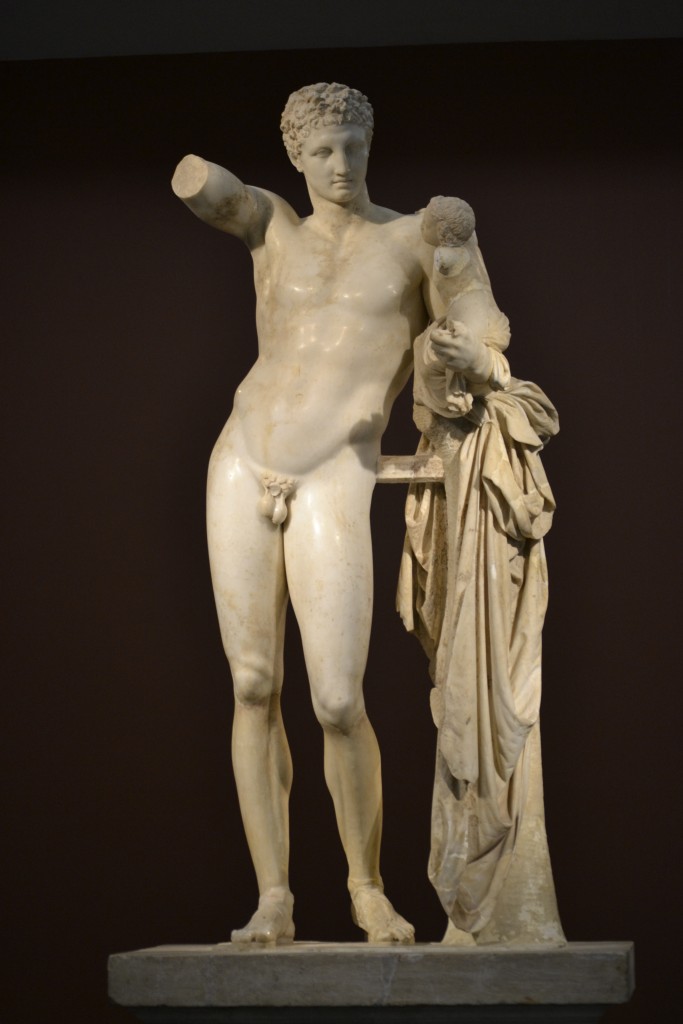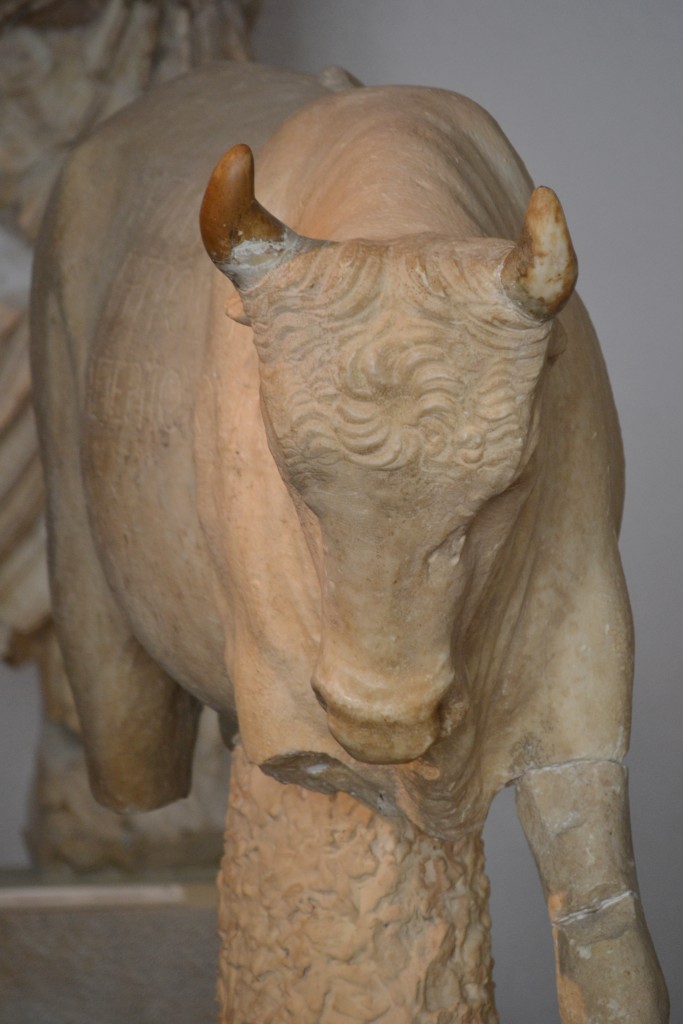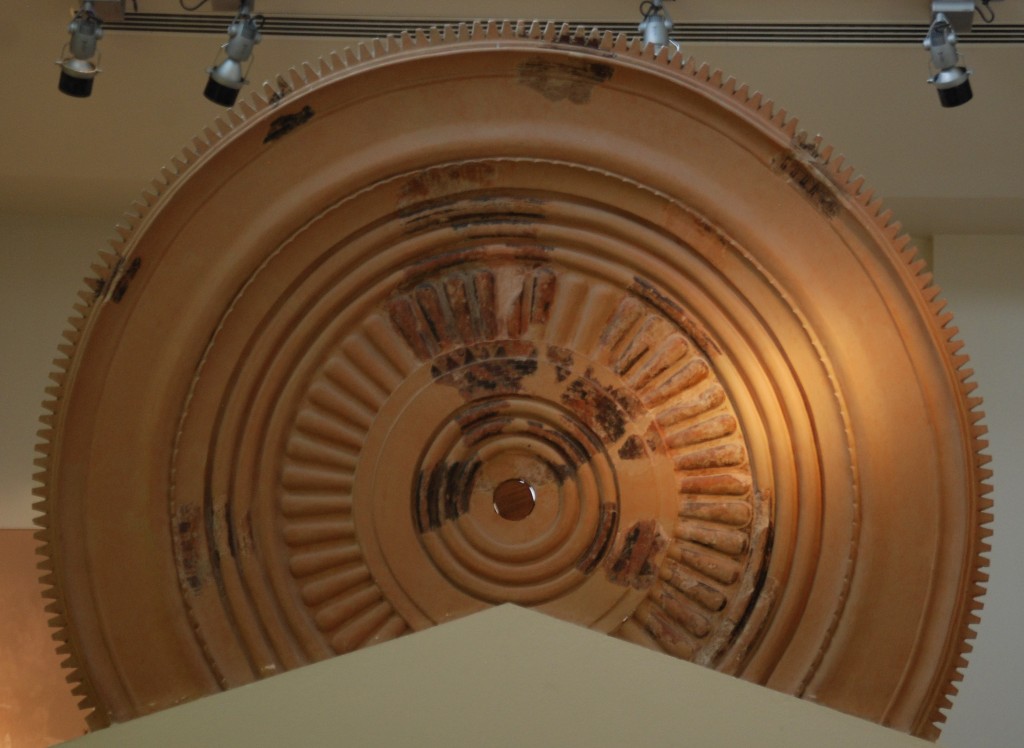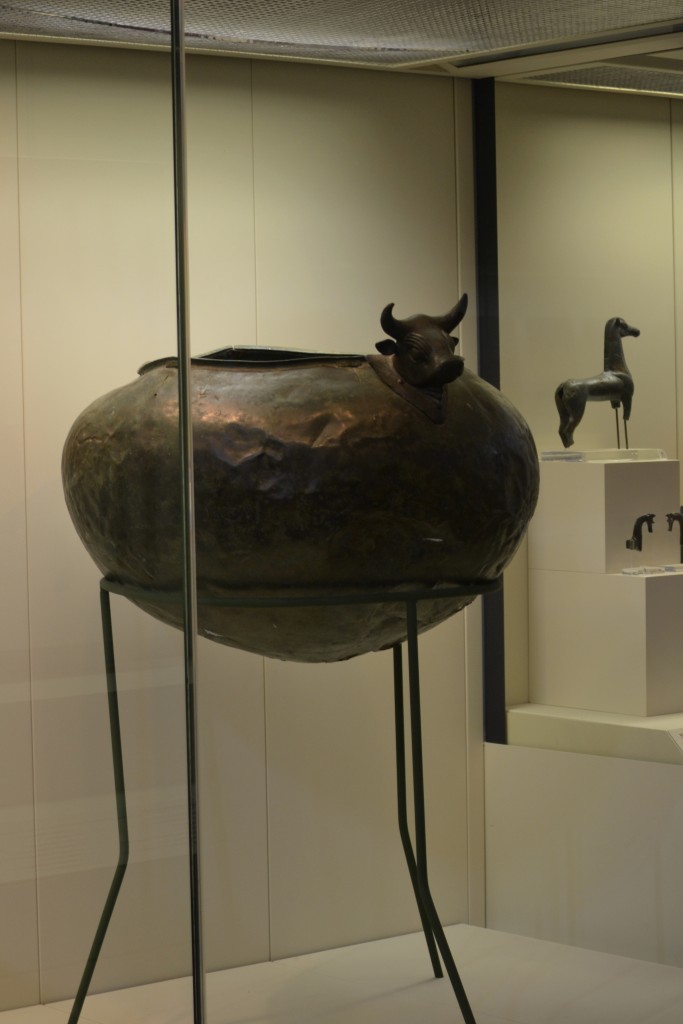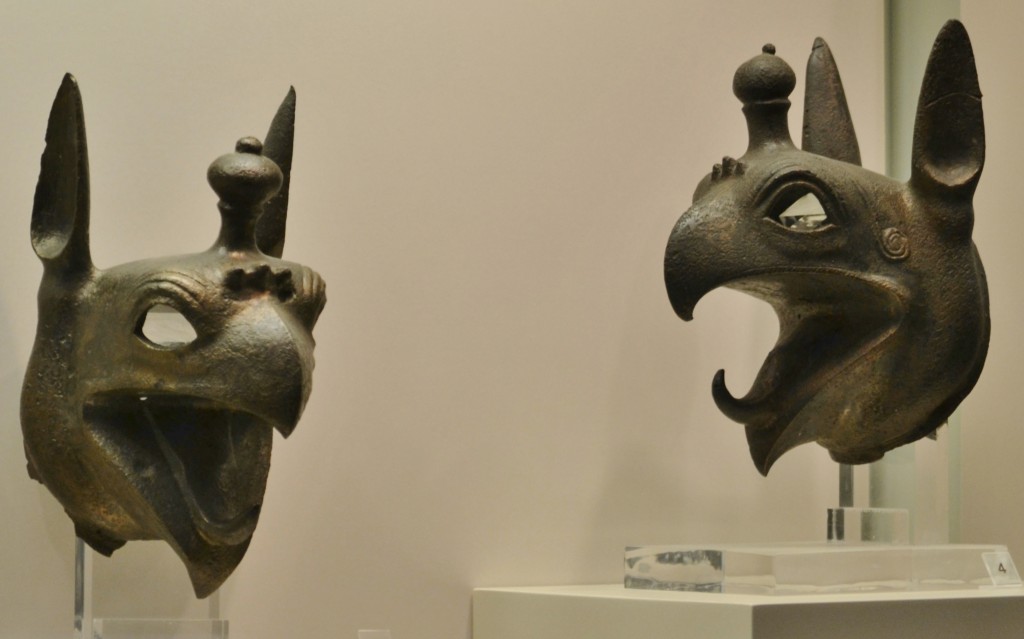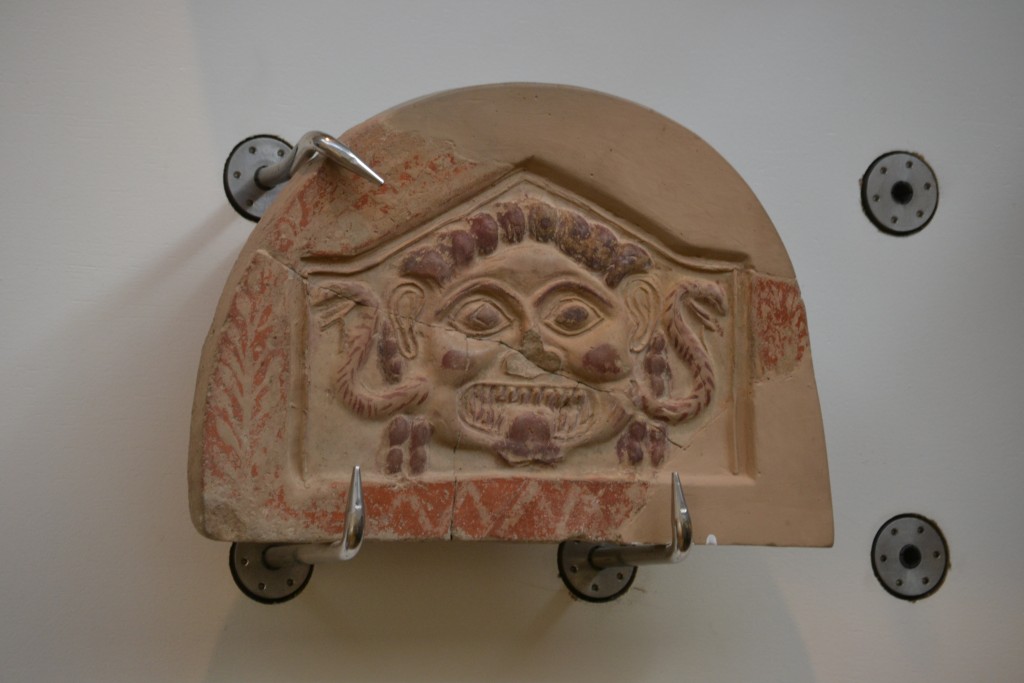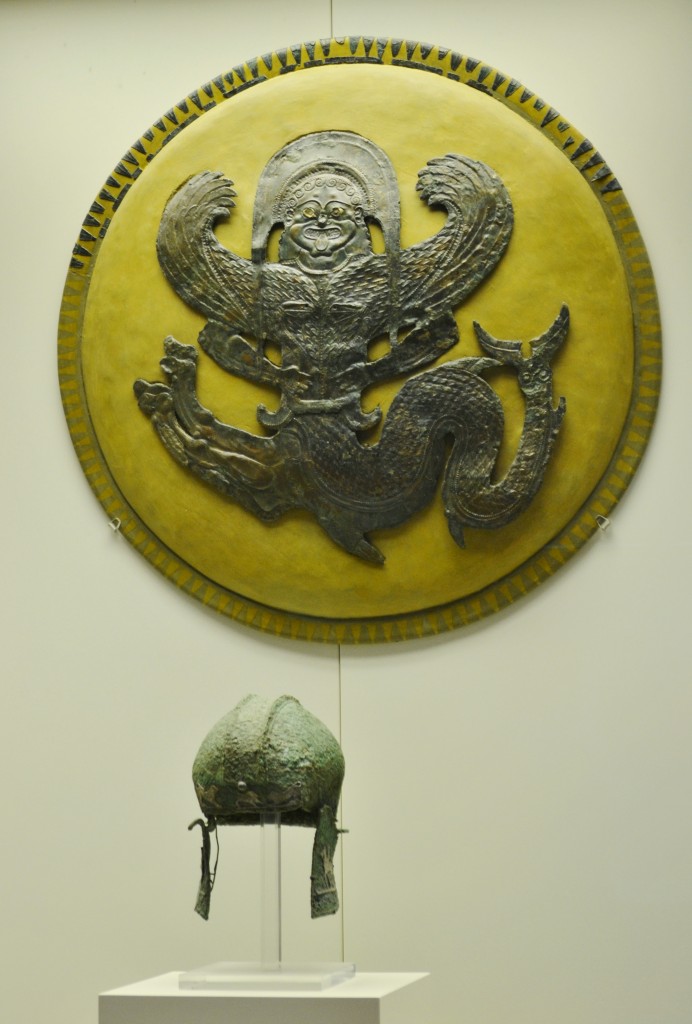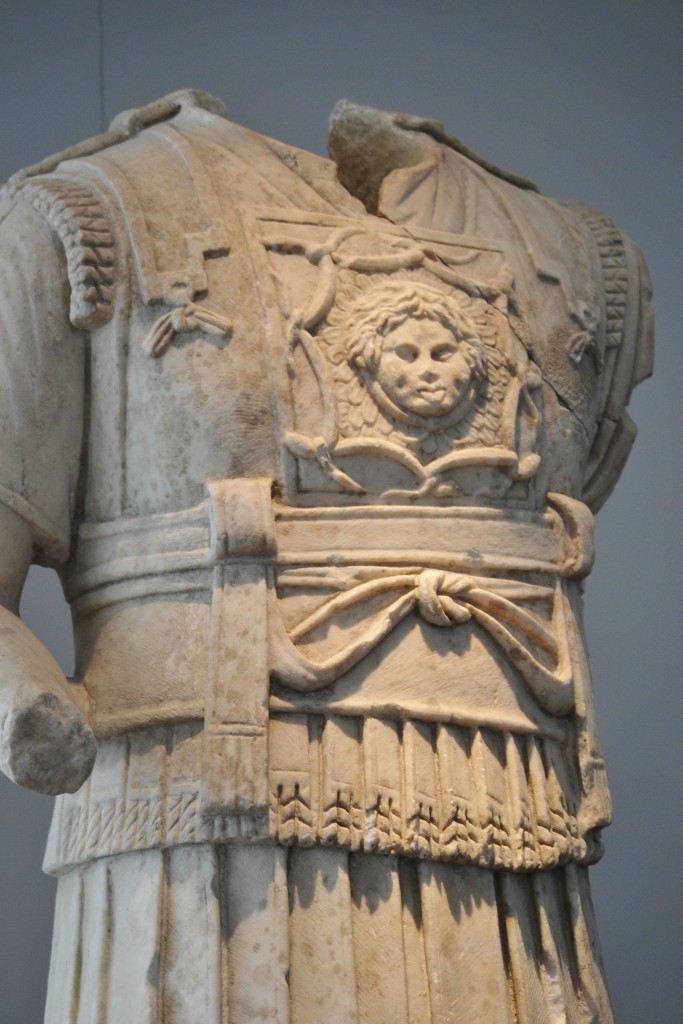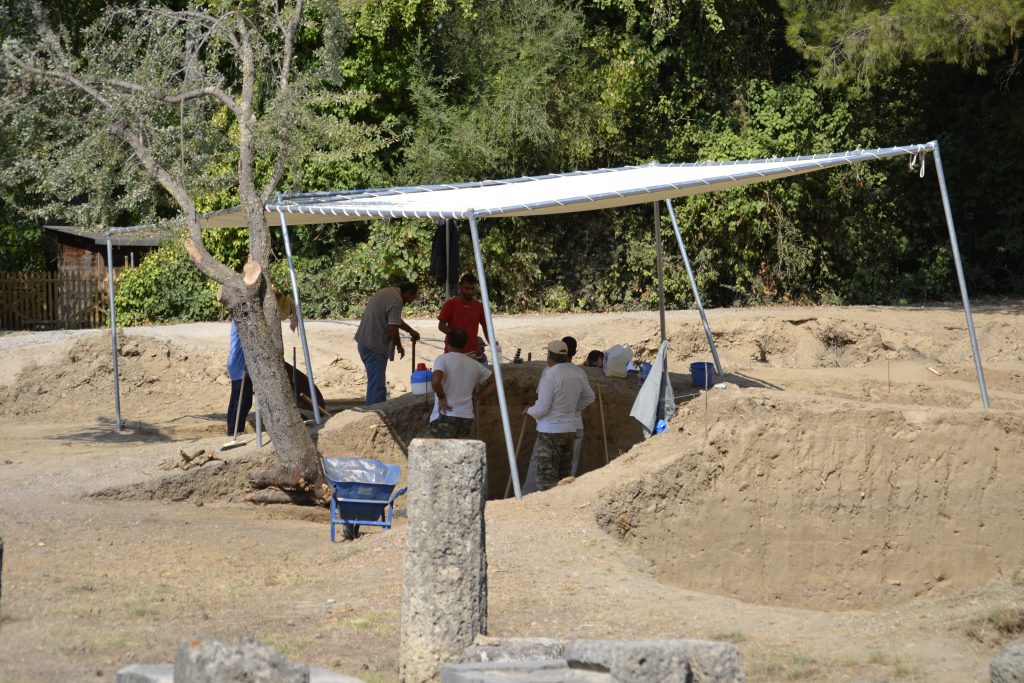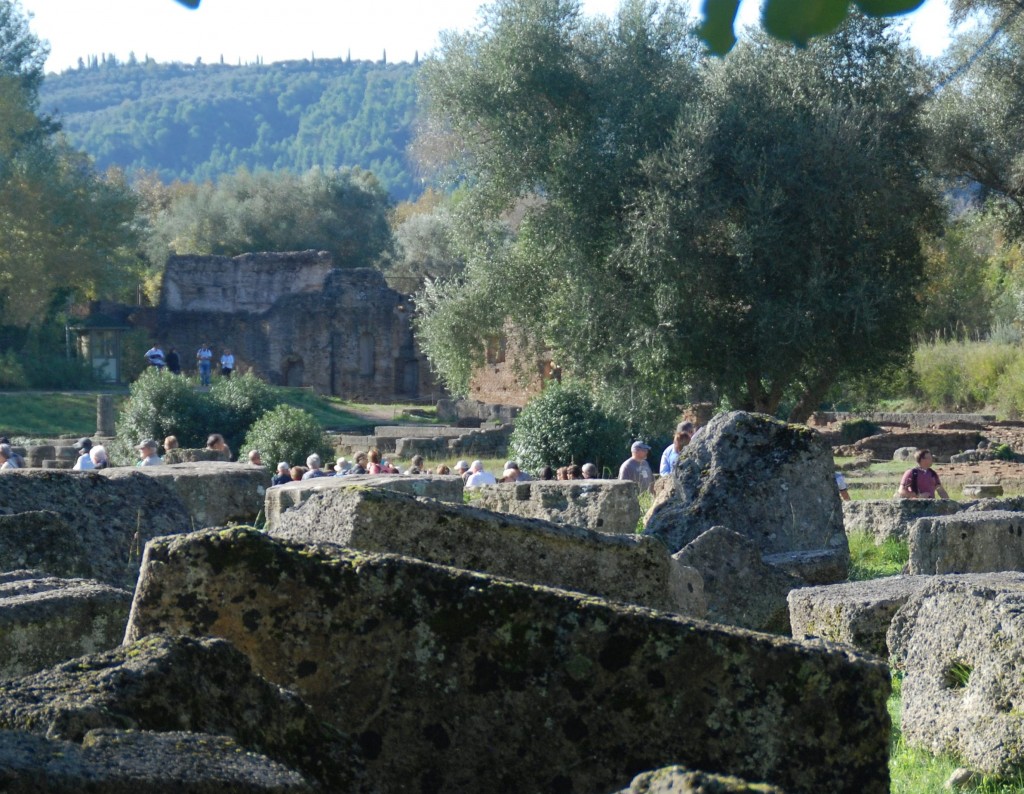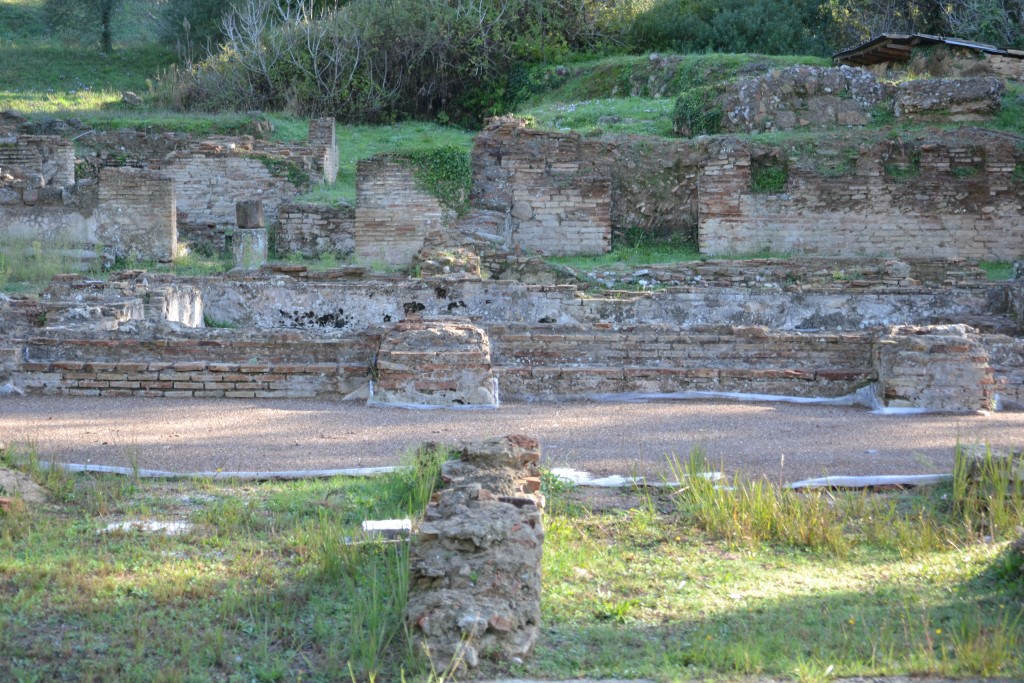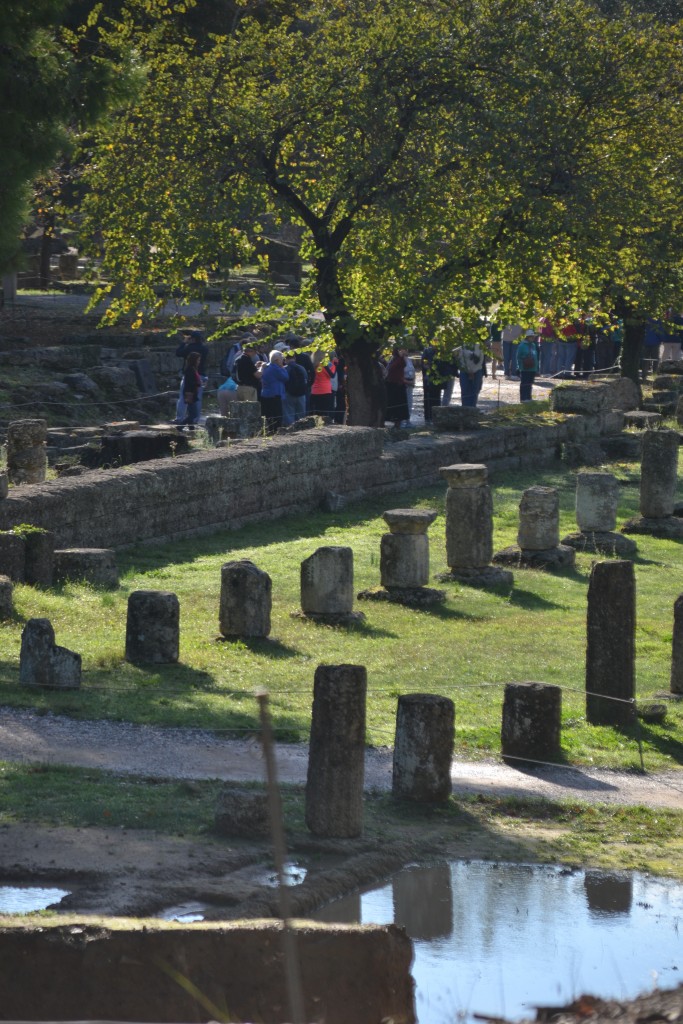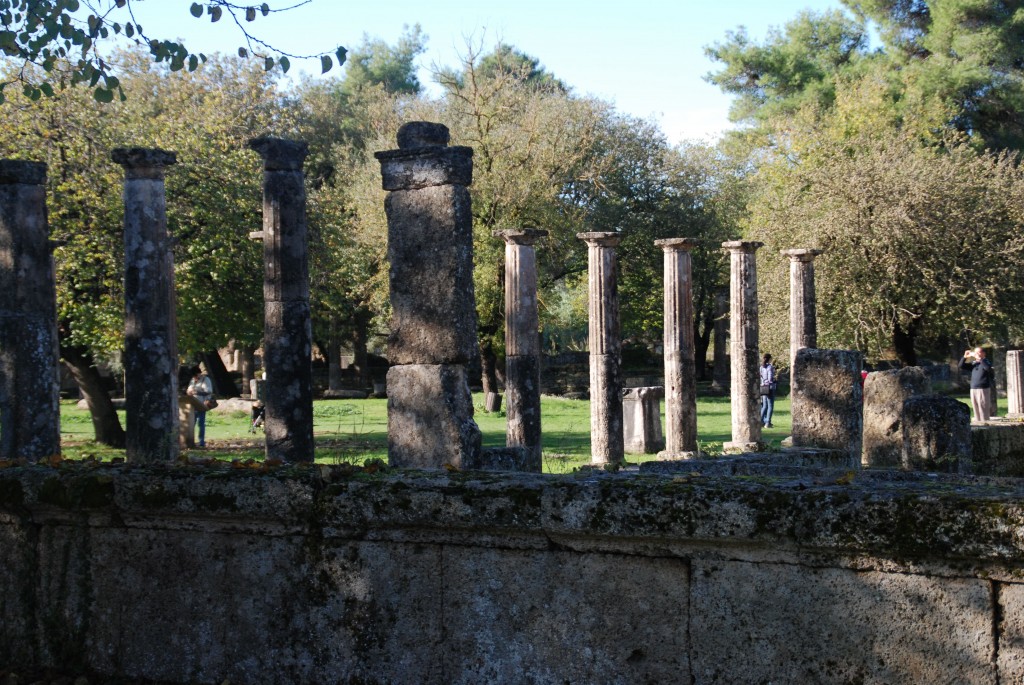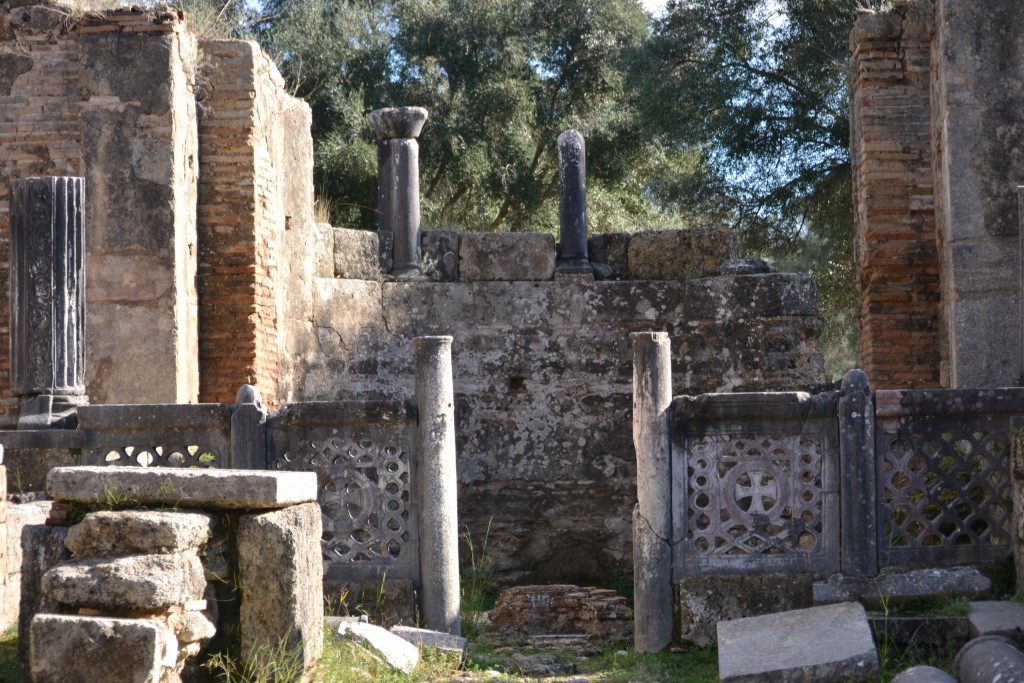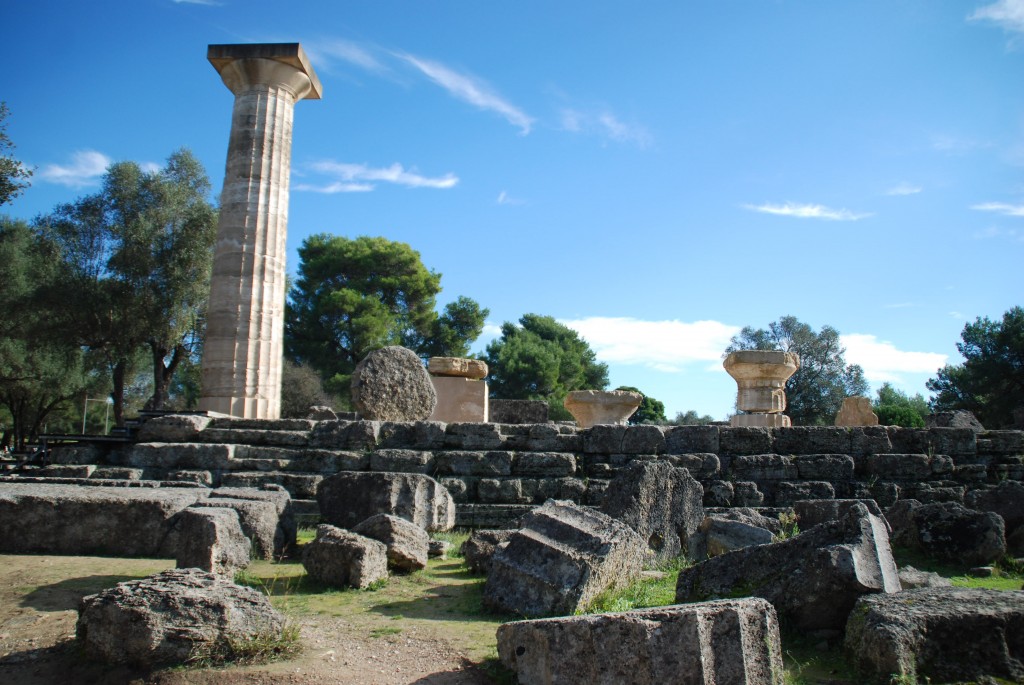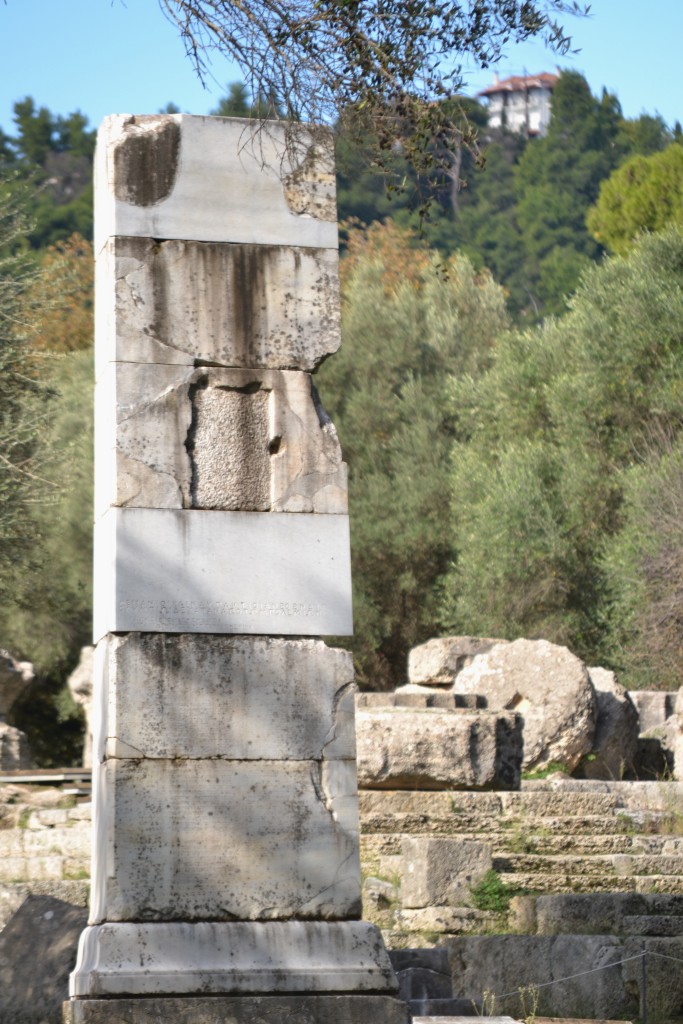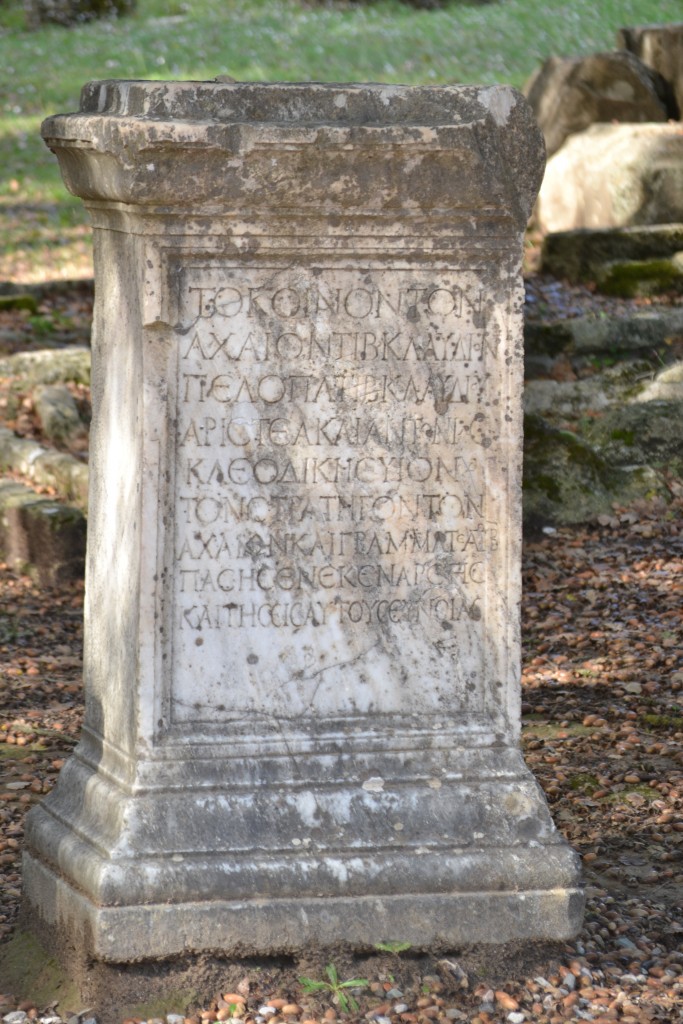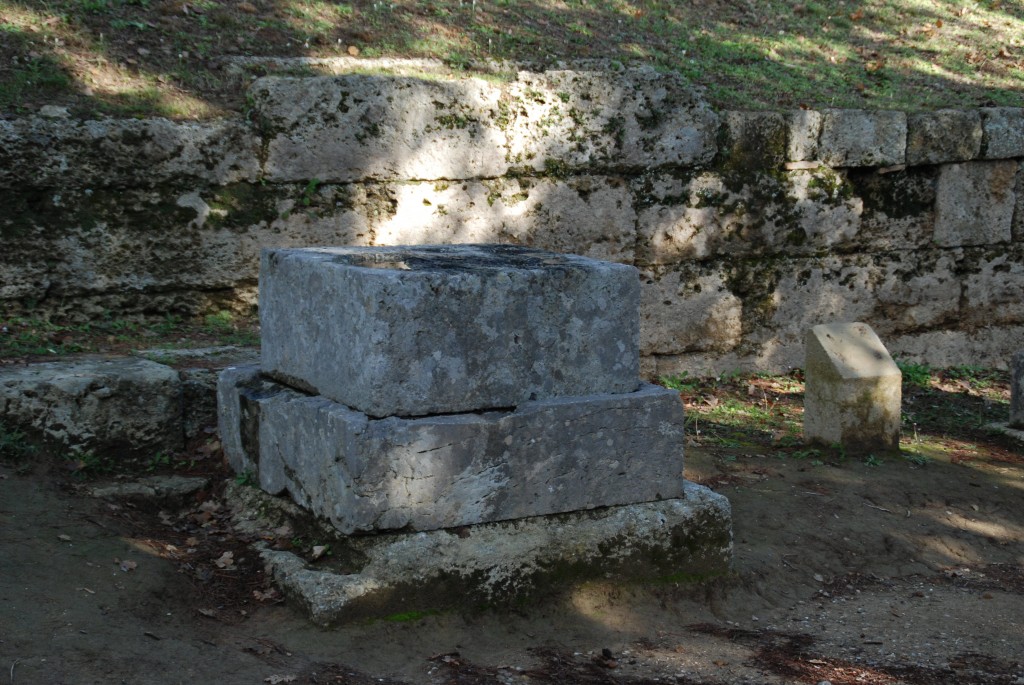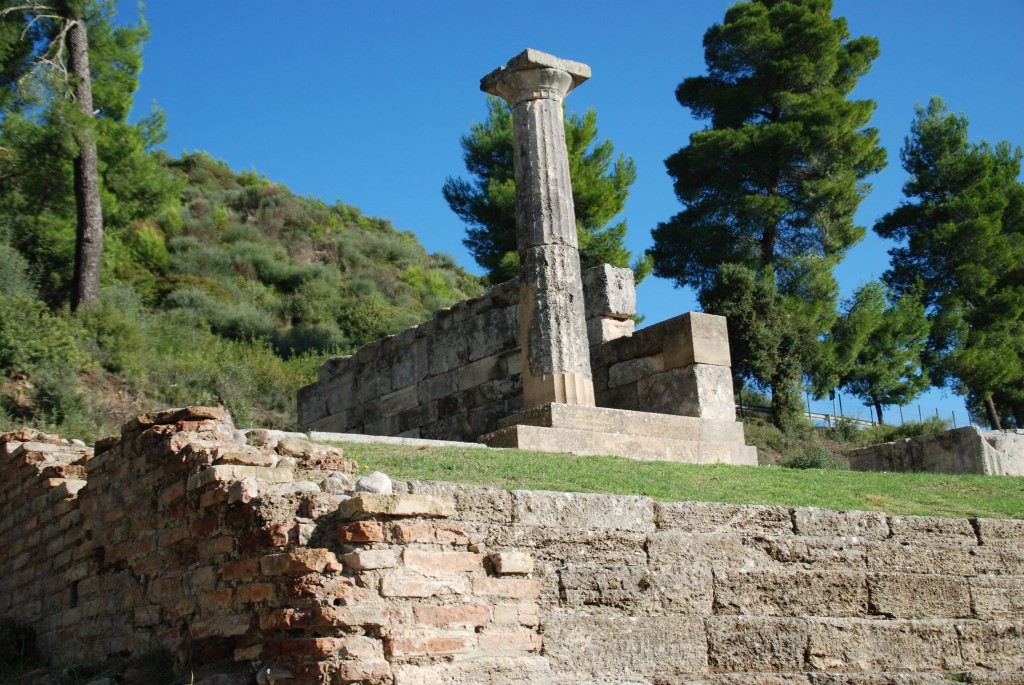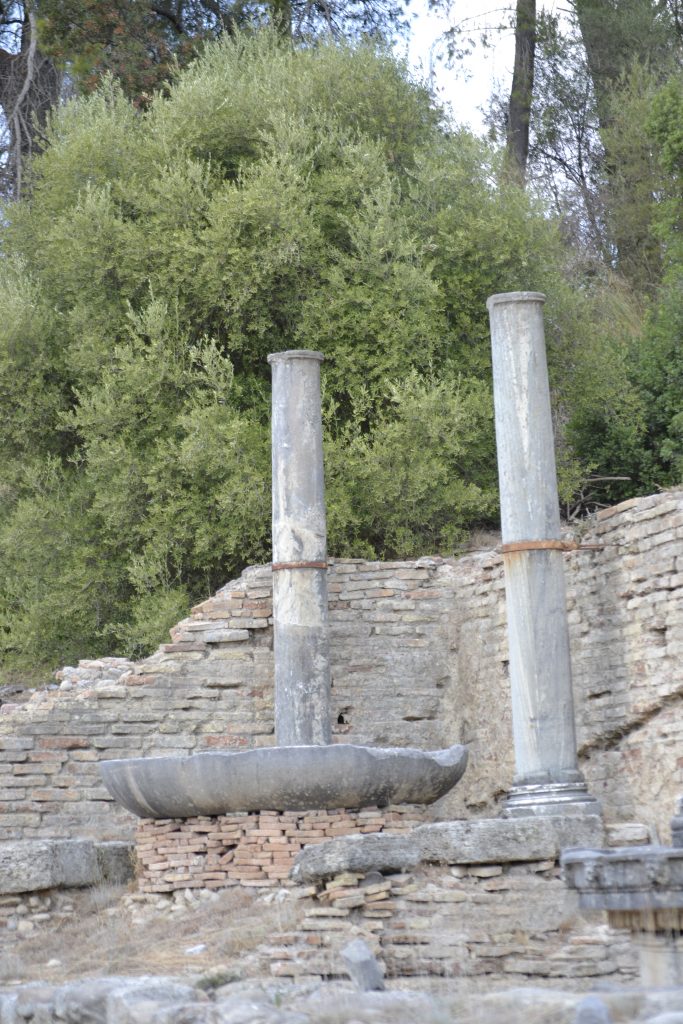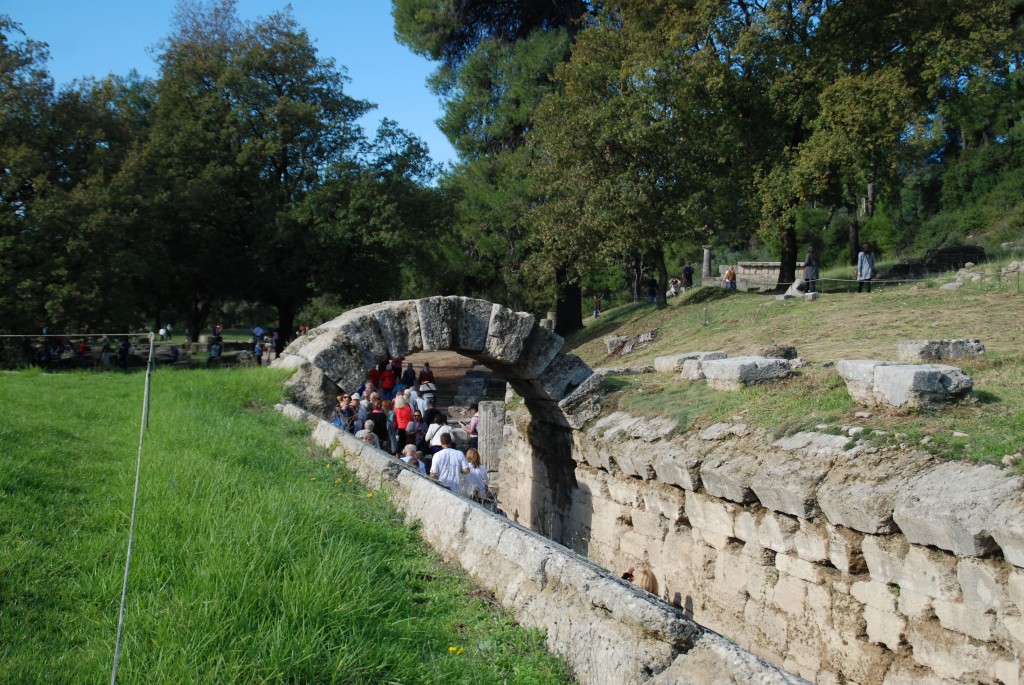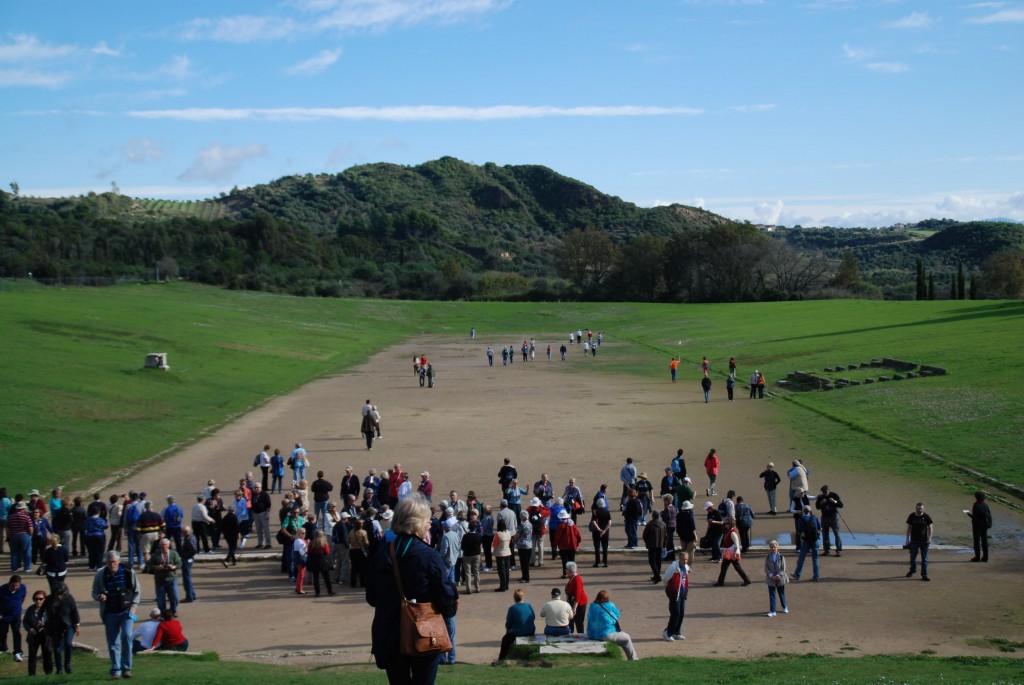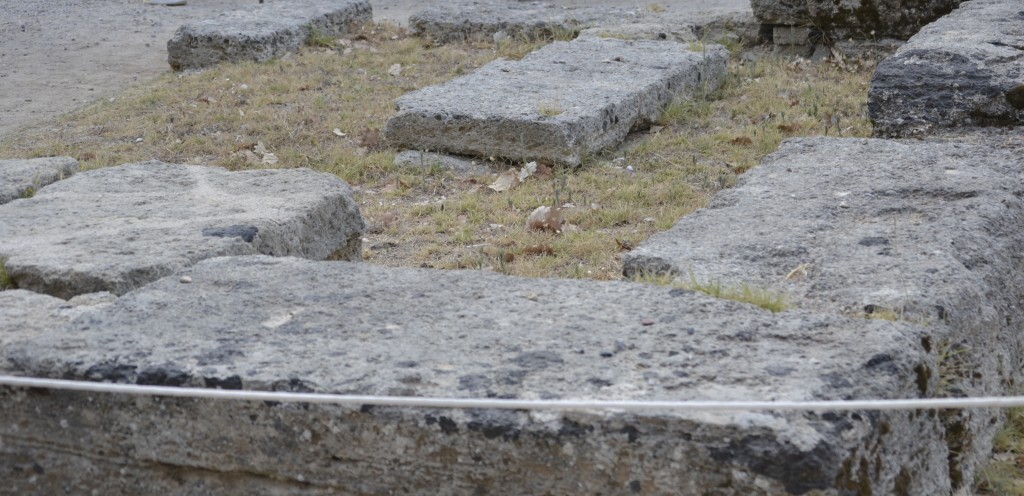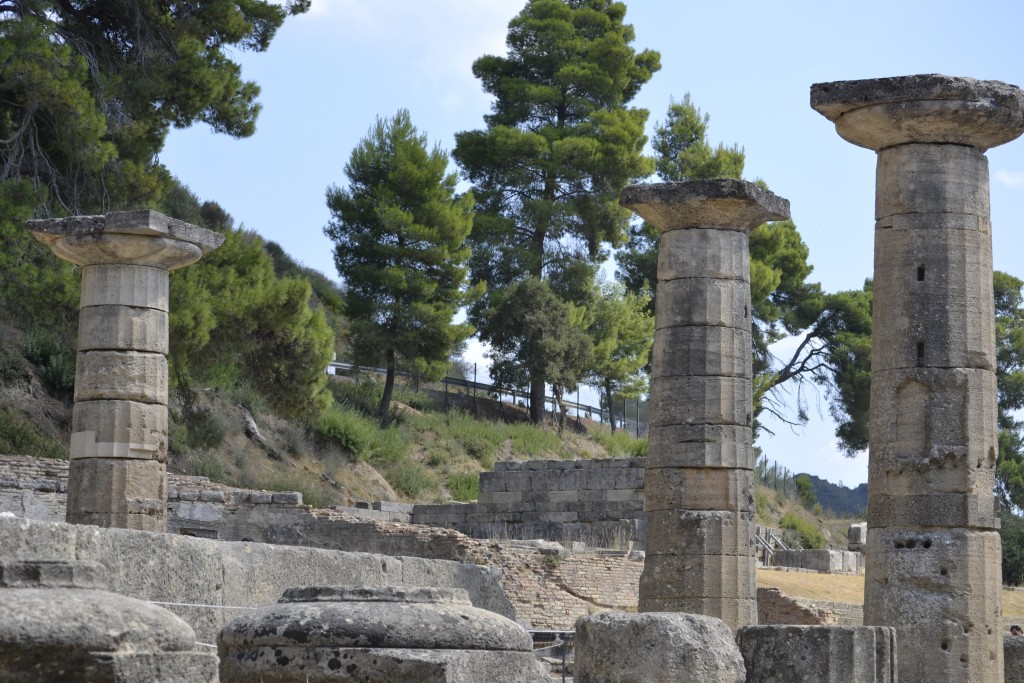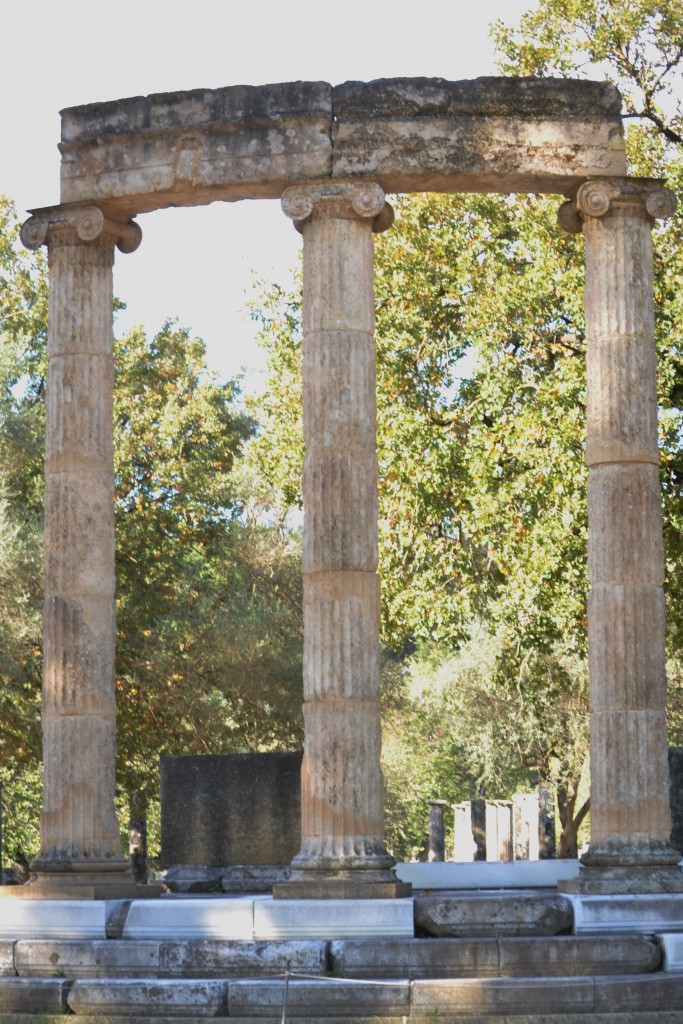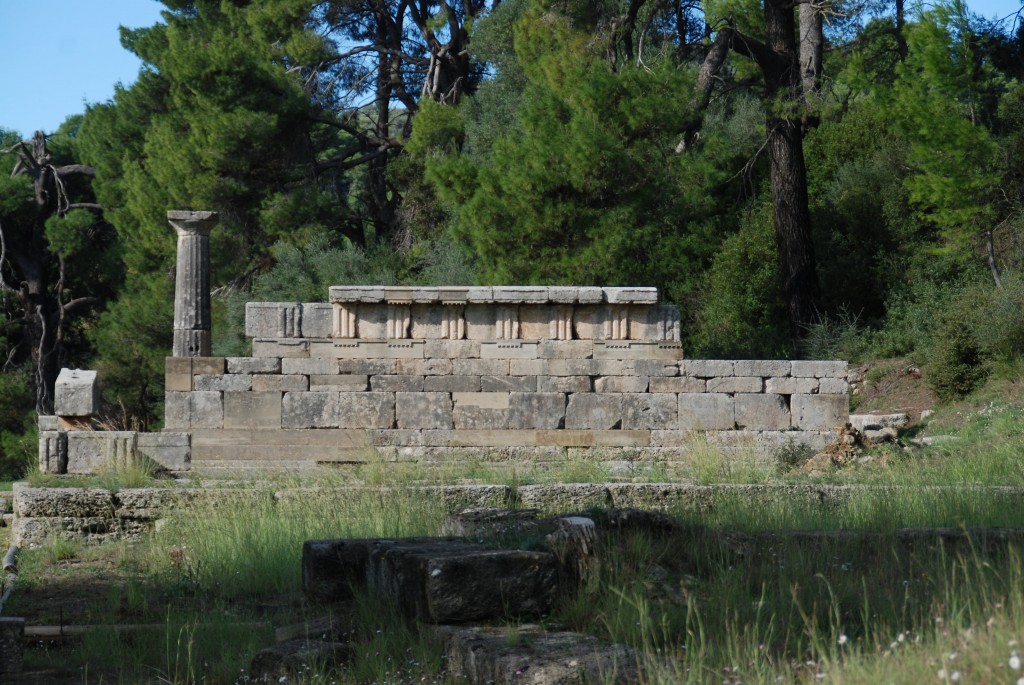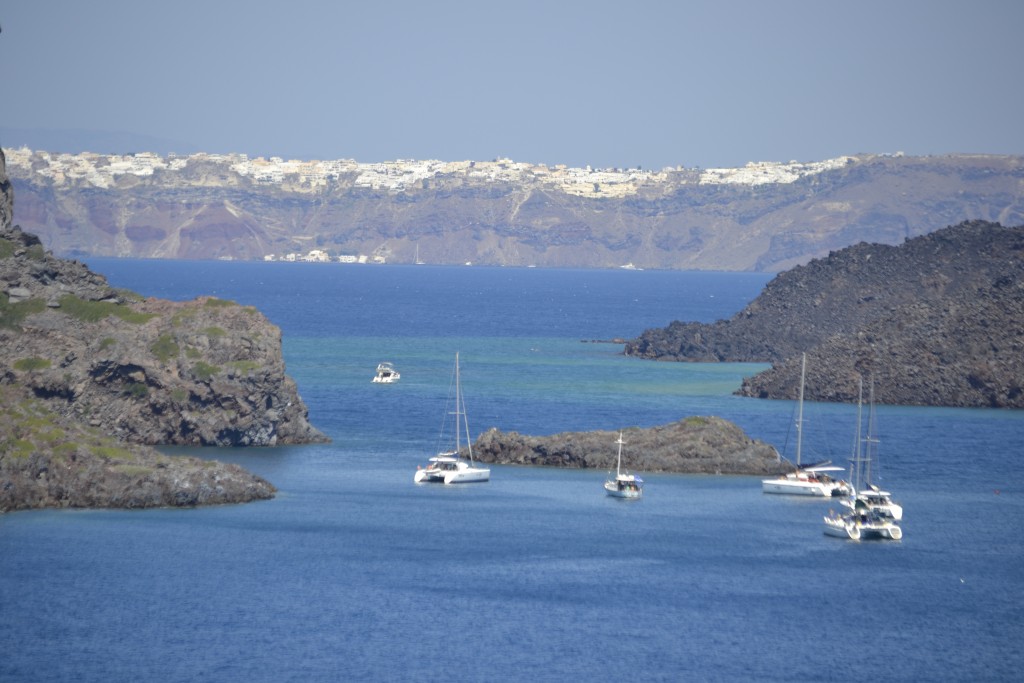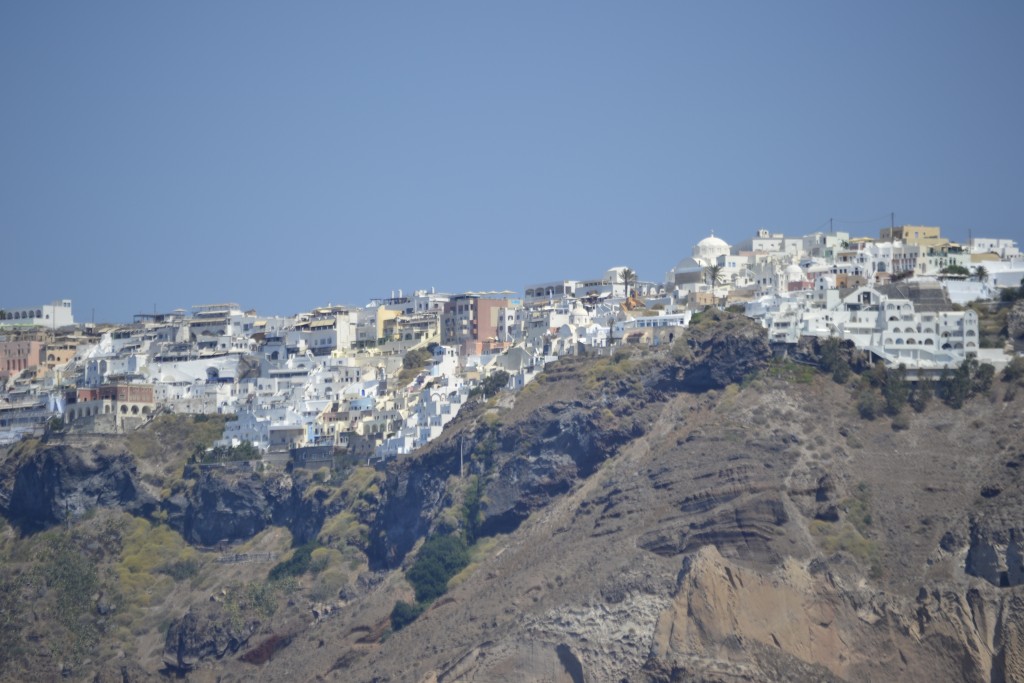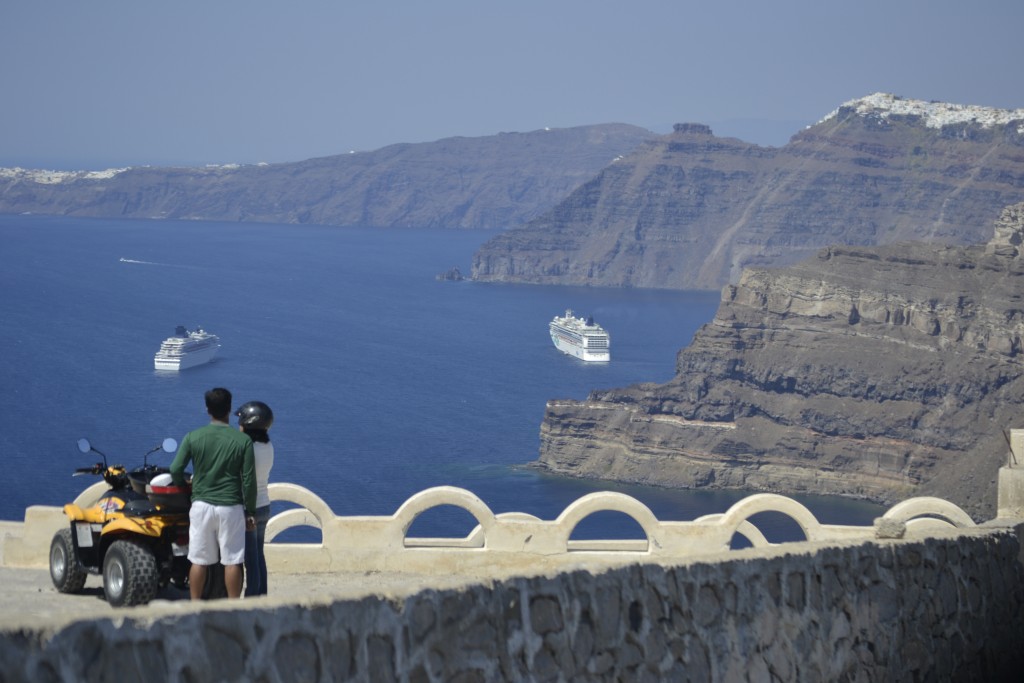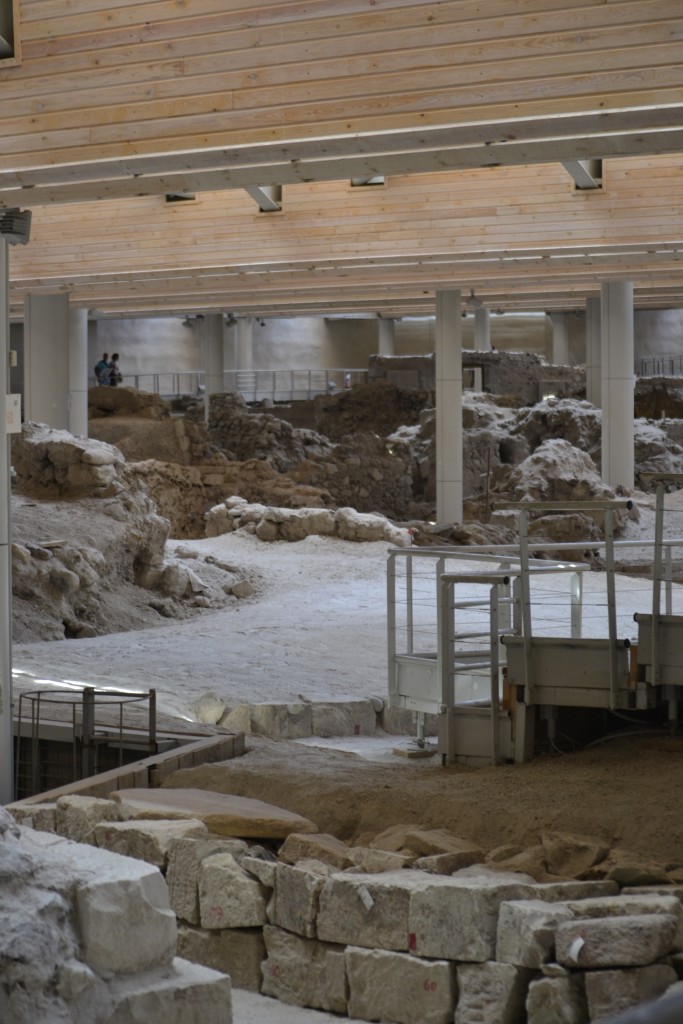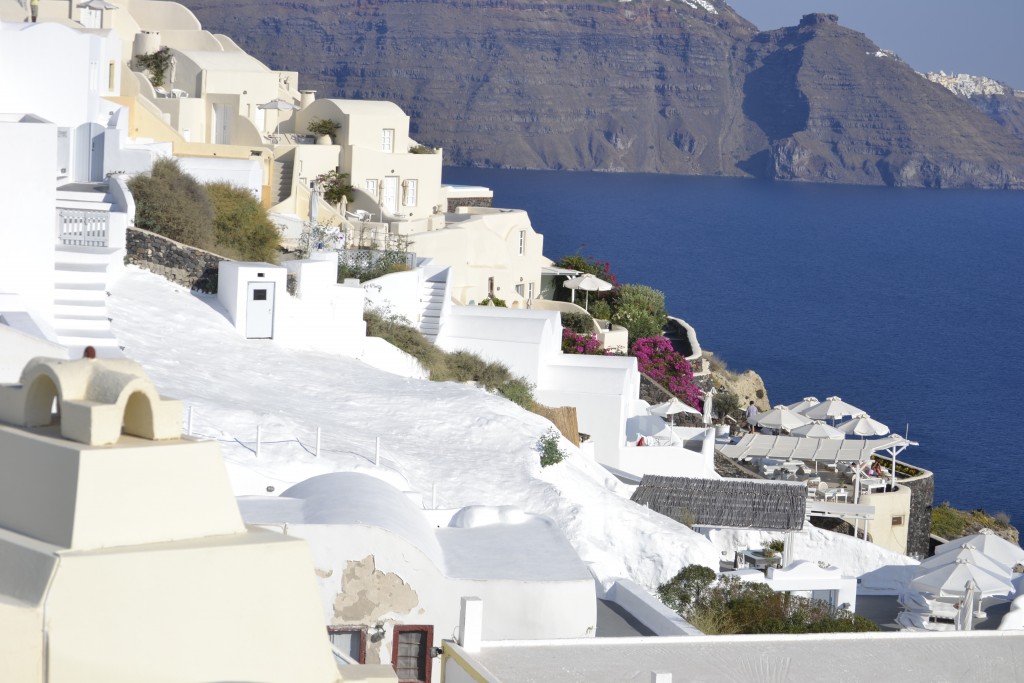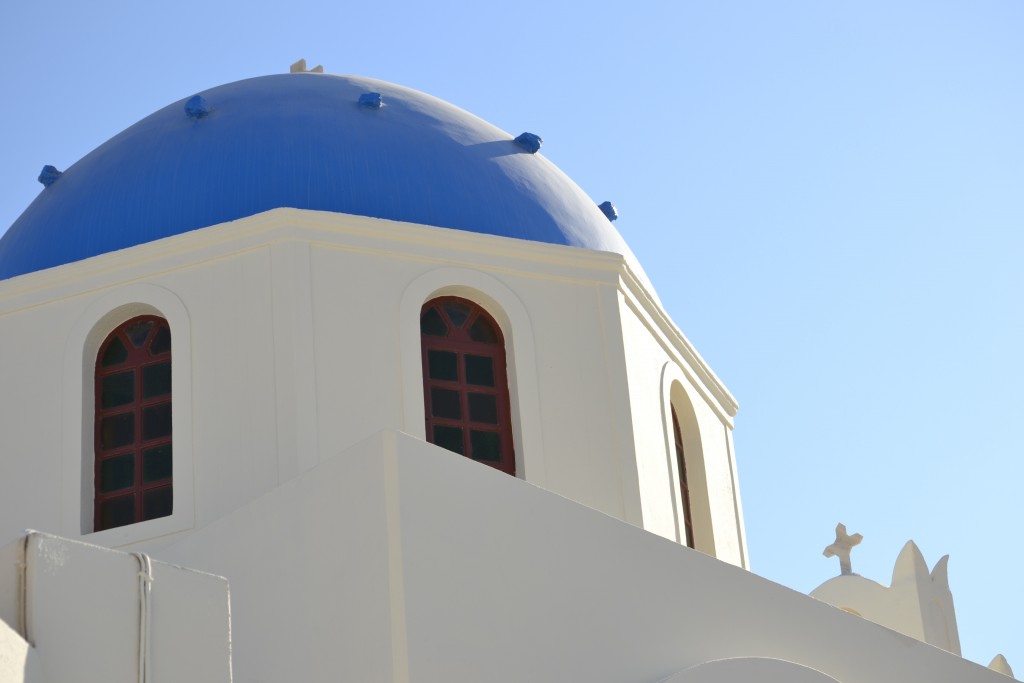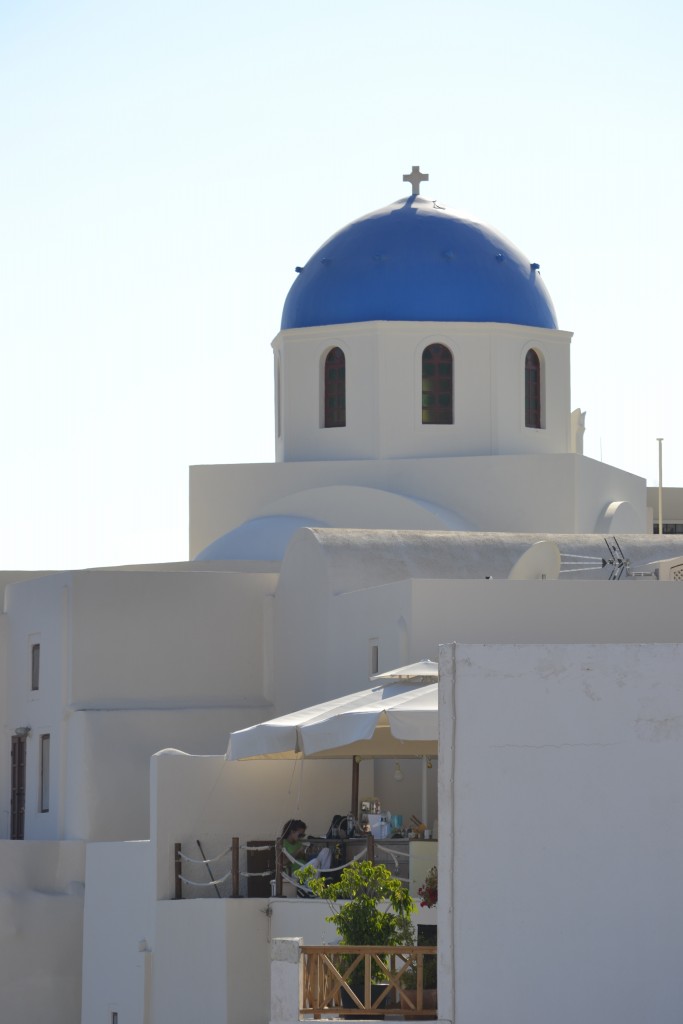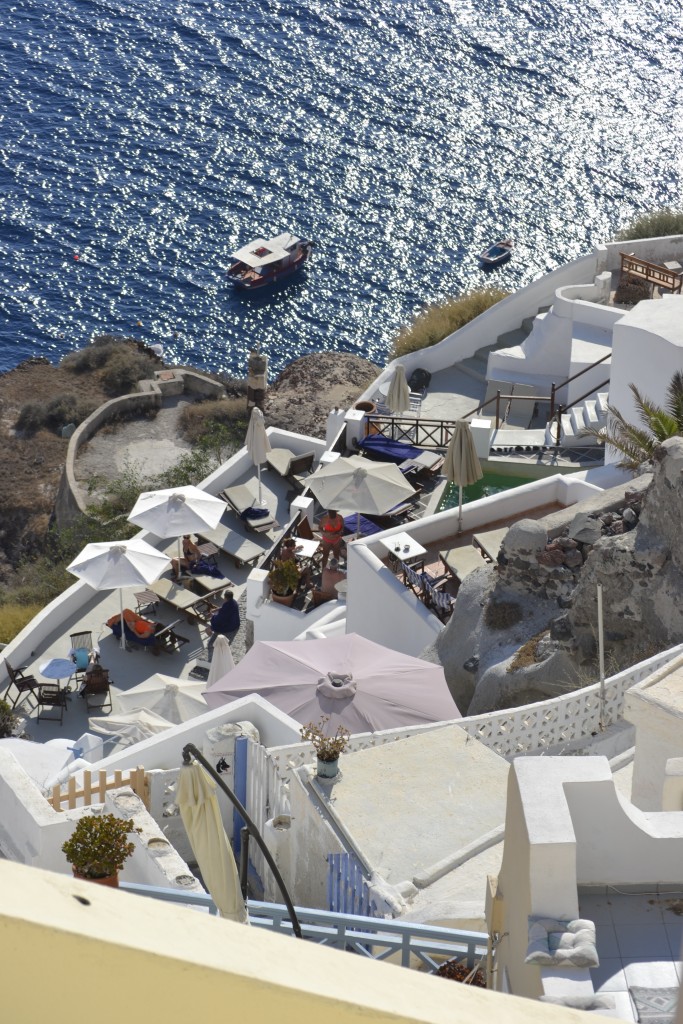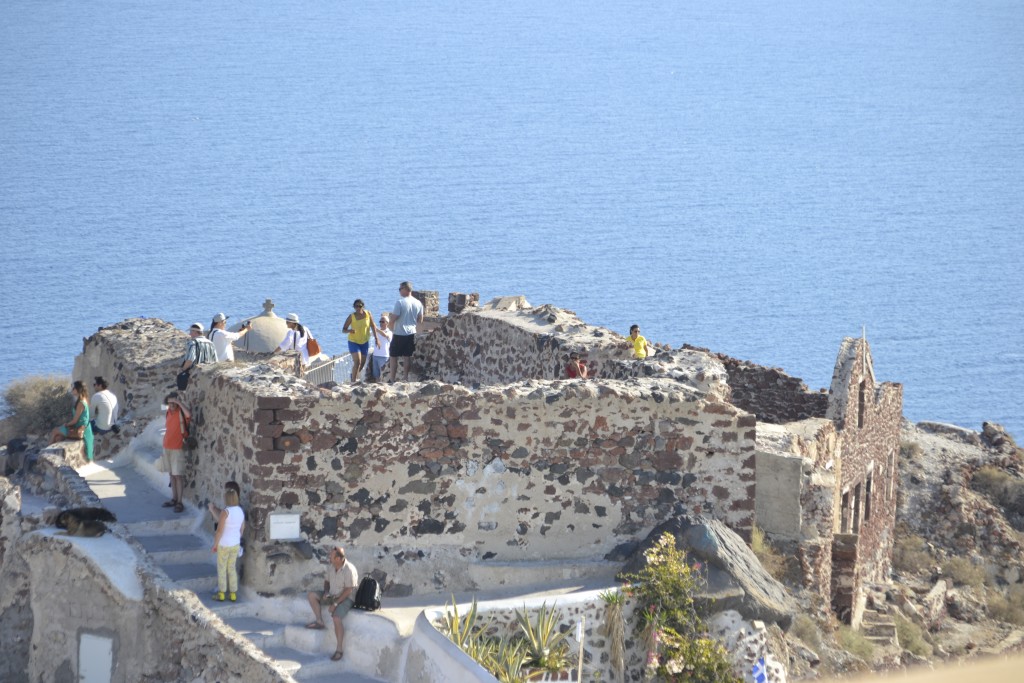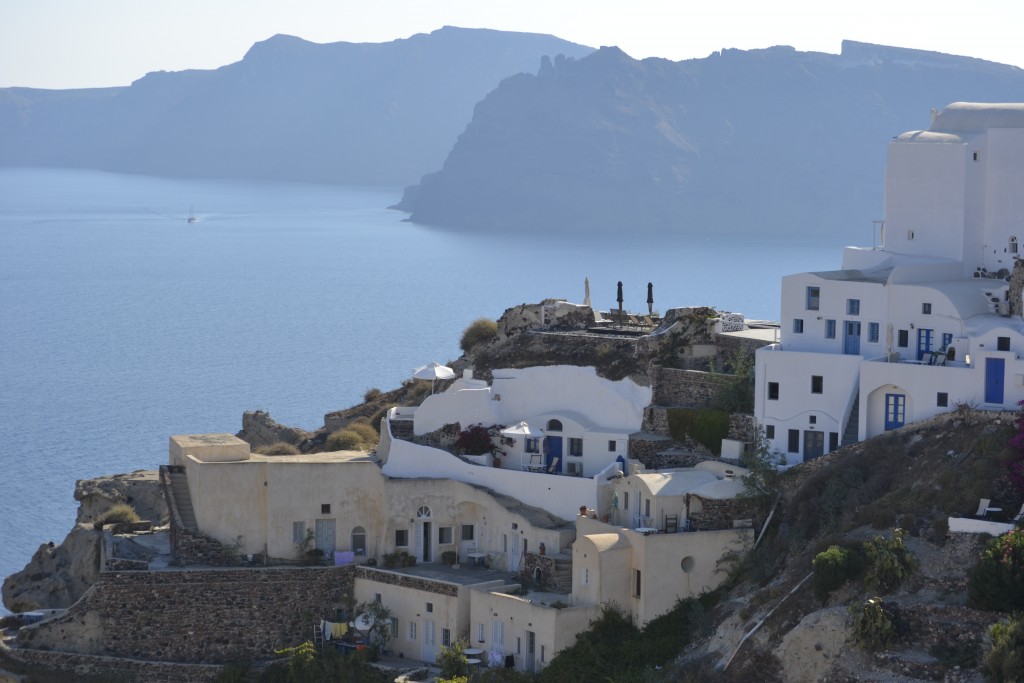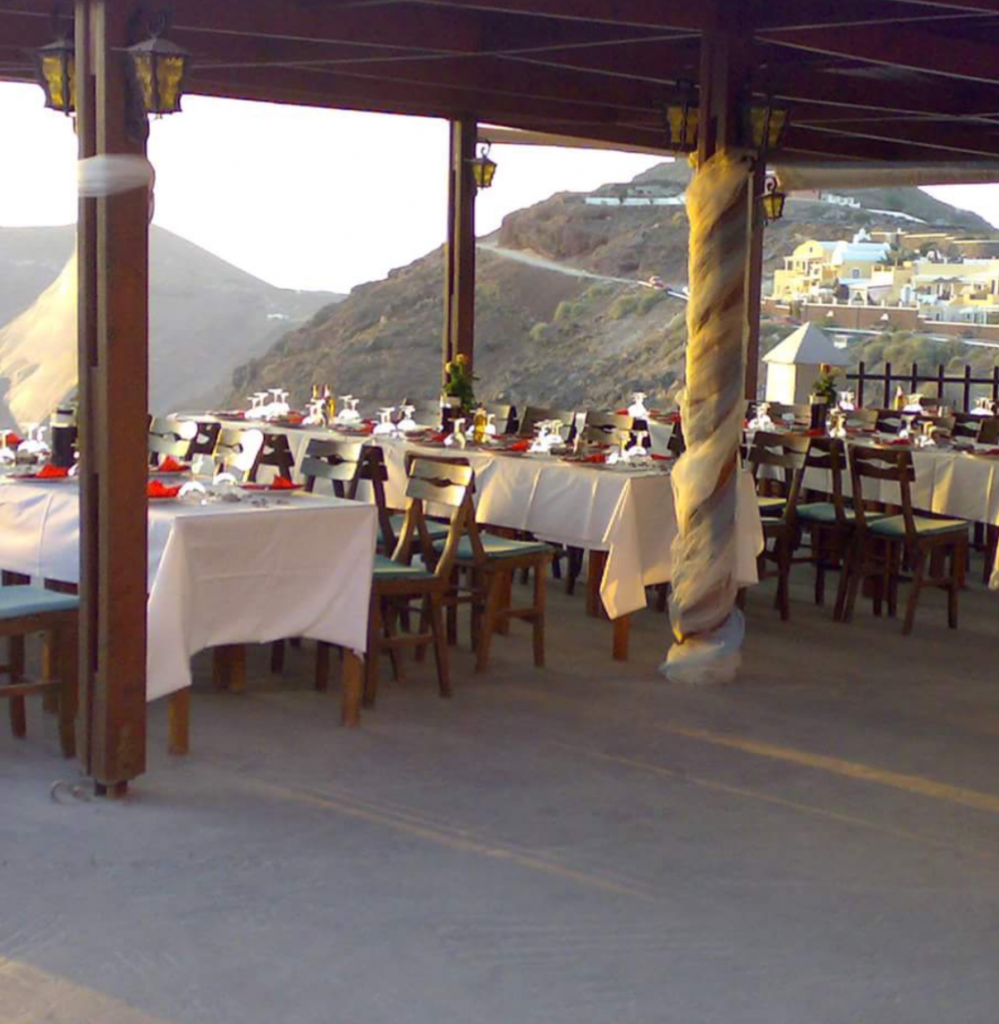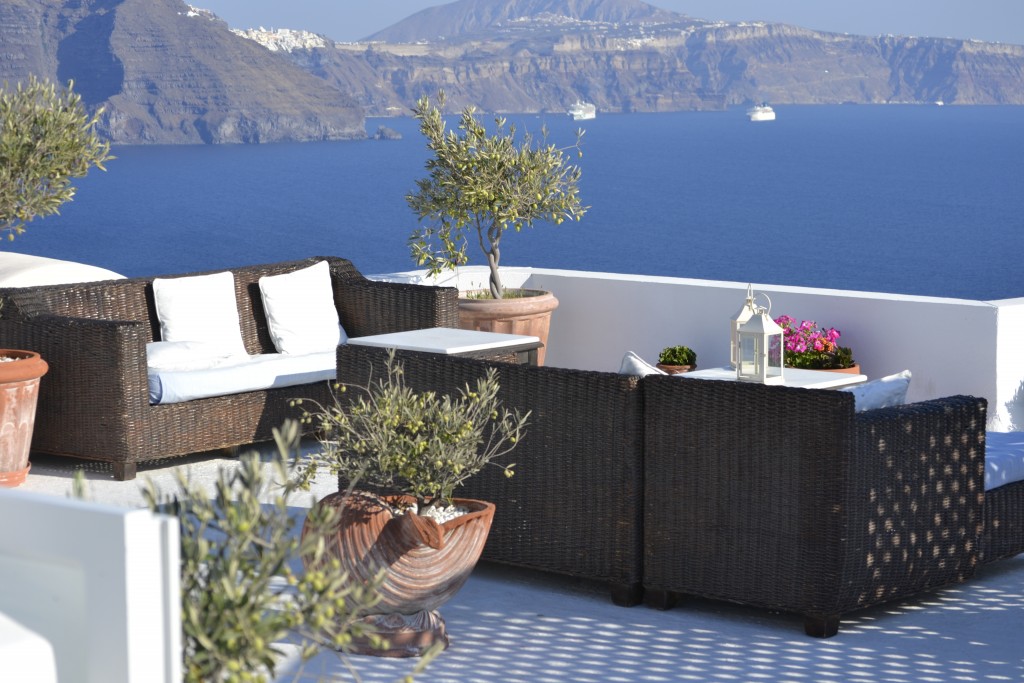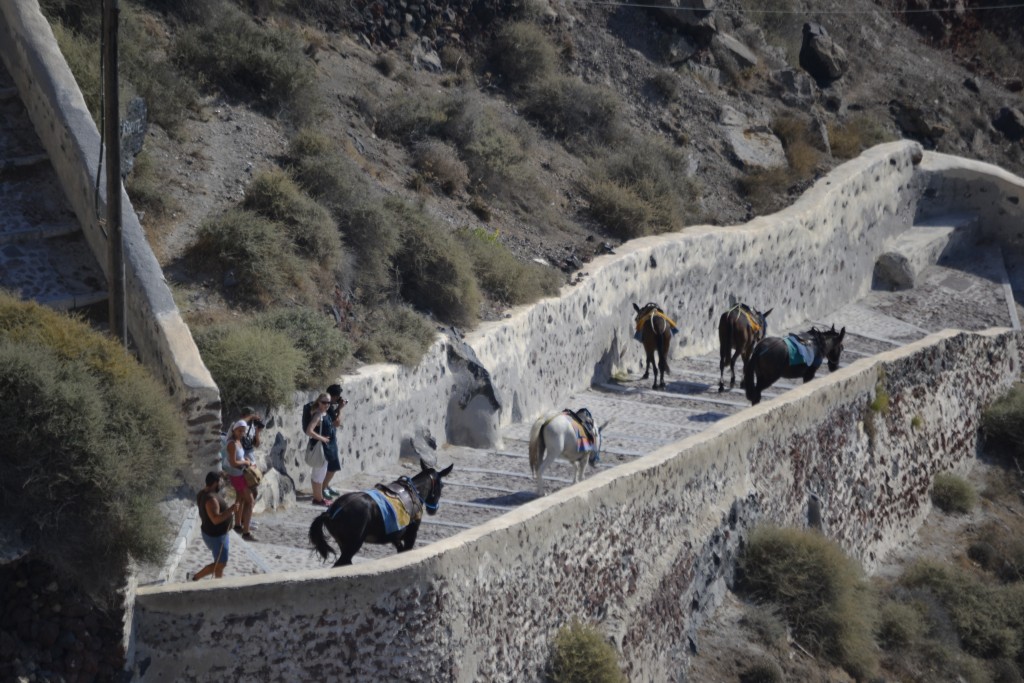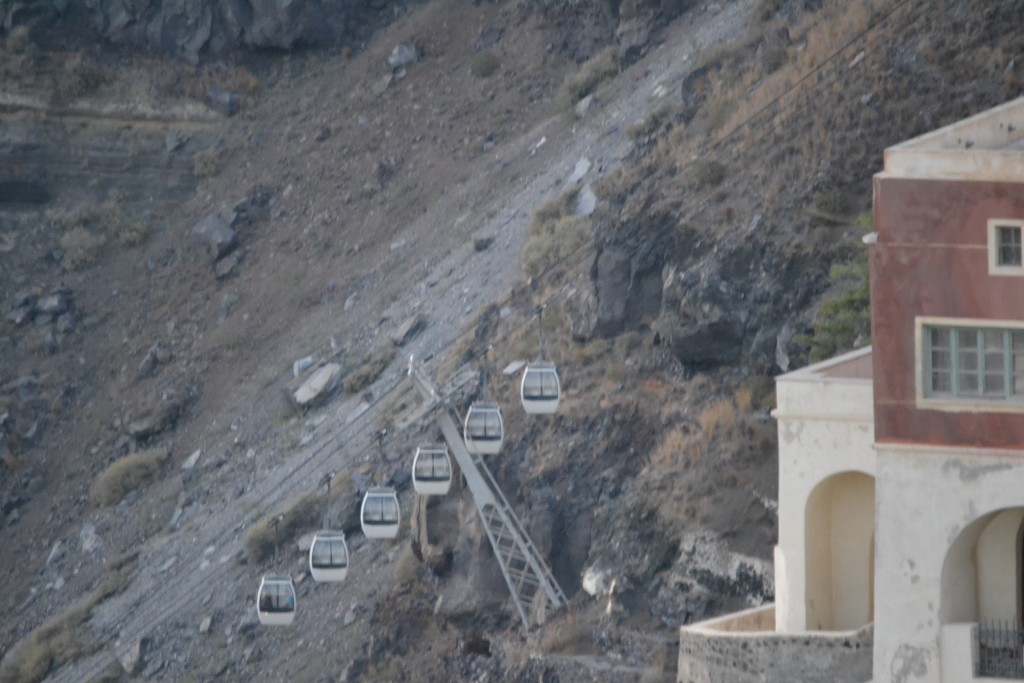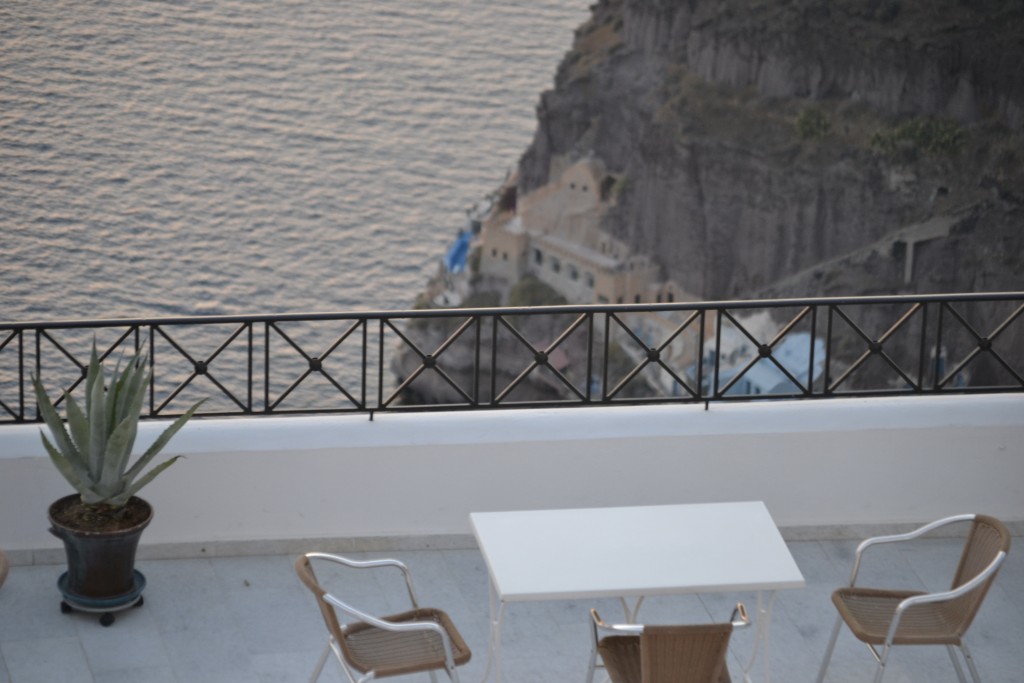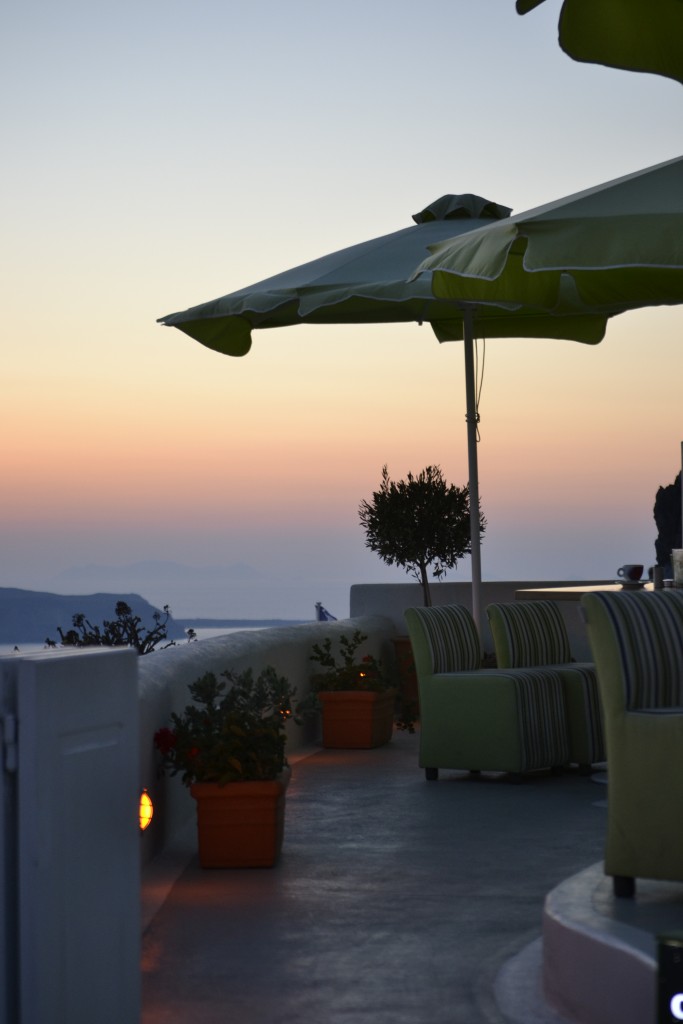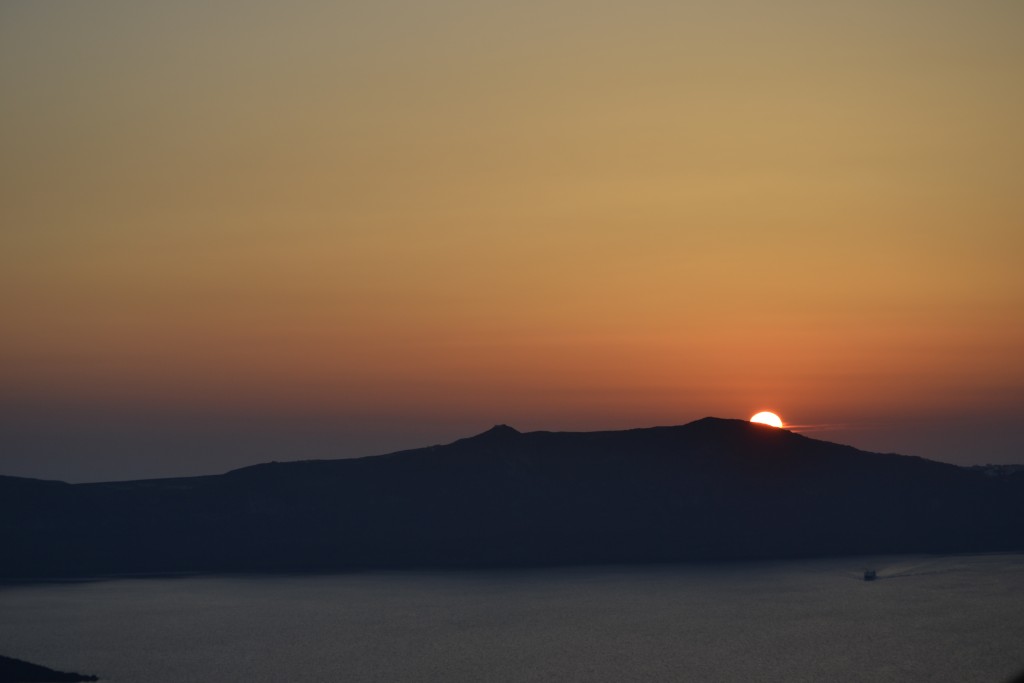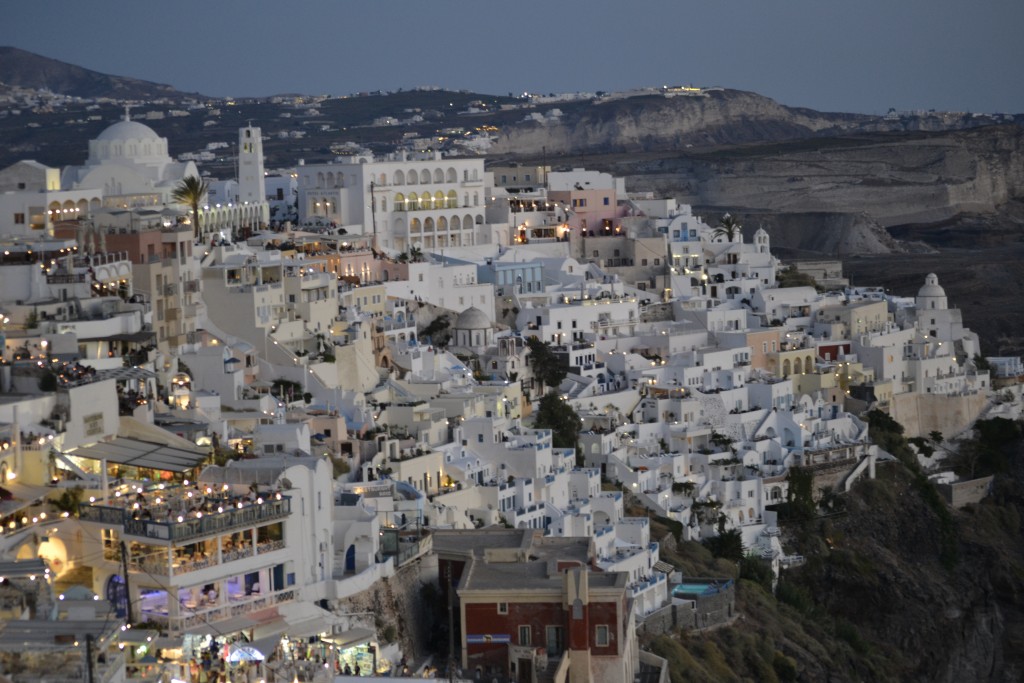The Olympia Archaeological Museum is within walking distance of the site where the first Olympic Games took place. The weather was beginning to heat up outside, so it was a welcome sight as we were met by our tour guide in the air-conditioned lobby of this fantastic exhibition of Olympic treasures.
Entering the museum, my eyes were immediately drawn to the small scale replica of the Olympic grounds. It was a perfect way for me to put the ruins that we had just visited in perspective. I could now imagine the ancient city of Olympia as it would have stood at the height of its splendor.
Continuing toward the main hall, I could see statues lined up on each side of the room. To the left were the Lapiths and Centaur statues that made up the West Pediment of the Temple of Zeus. From left to right, the lifelike figures included: The Old Ladies, Lapith Boy, Centaur with Lapith Boy, Deidama, Apollo, Theseus, seen here as the bearded man on the left, is beating up a Centaur, half man/half horse who has come down to break up a wedding reception and the god Apollo, is urging him on, Lapith Girl, and lastly, The Old Ladies.
To the right, I could see the Statues of Pelops from the East Pediment of the Temple of Zeus, which would have been located above the main entrance of the temple. It was here that the victors were crowned with their olive wreaths. From left the right the statues stood in the following order: Alpheios, Pelops Quadriga,(shown here: Hippodamia, Pelops, Zeus, Oinomaos), Sterope, Dinomaos Quadriga, Kladeos. Pelops was the mythical founder of the games and King Oenomaus prepare to compete in the chariot races. Standing beside Pelops is Hippodamia, the king’s daughter.
Exiting this room, I continued straight ahead for a view of the statue of Nike (Nee-kee), also known as the statue of Victory as well as the Nike of Paconios. It was originally located next to the Temple of Zeus. The statue is made of marble from the island of Paros. With her wings she would have towered 36 feet tall, alit on her pedestal rising above the Olympic winners during their crowning ceremony.
The room to the right of the statue of Nike contains artifacts that were found in the Workshop of Pheidias’ Room. The large cup shown as #10, was found to have an inscription that stated, “I belong to Pheidias.” There are several items displayed here that show the fascinating artistry of the ancient Greeks. With their various designs and figures of Greek gods, their possessions prove to show the importance of their religious beliefs and talent in the arts.
Set apart in its own alcove, the Hermes of Praxiteles is a masterpiece in Classical sculpture. Praxiteles was known in his day as the first artist to sculpt nude women and was the master of creating figures that were anatomically correct. This statue took Praxiteles 10 years to complete and was uncovered in the Temple of Hera. Hermes, seen here with Dionysis, is one of the most brilliant discoveries of the site of Olympia.
There were two tiers of statues lining the extravagant Nymphaeum (fountain) and they can be found by a bit of backtracking to the Workshop of Pheidias and turning left towards a long hall. This next room is lined with the statues of the emperors and their families, while the bull, located in the center of the room, would have been a central masterpiece adorning the fountain of the Nymphaeum.
It is absolutely astonishing that many of the archaeological finds from Olympia remained intact and have been restored quite nicely. For example, the Disk of the Sun, located in the Temple of Hera is a fabulous example of the preservation of these timeless artifacts. This seven and a half foot wide disk made of terra-cotta was painted in various colors. It was the akroterion that rested upon the crest of the temple’s roof, representing the virtue of truth.
The prize for winning the Olympic Games were not medals like the athletes receive today. Some of the gifts may have included bronze cauldrons or items made with precious medals. These large pots were also used as vessels containing gifts to the gods such as incense, sacrificial offerings or liquid potions.
A fascinating collection of artifacts tell the story of the Olympic Games and explains how this location was also an important religious site for the athletes. These were some of my favorites:
Bronze Griffins
Terra Cotta Medusa
Shield Device with Representation of Phobos
Statue with Intricate Detail of Uniform
What interested me about Olympia was that the area was not only a stadium, arena and training center but also the religious sites and housing for the athletes and their families. This is only a small fraction of the delicate items that are displayed at the archaeological museum and is well worth the time to explore.
Have you had the opportunity to visit the Olympia Archaeological Museum? I would love to hear about your experience if you would kindly leave a message in the comments section below! Many Thanks and Happy Travels!
What to See and What to Do:
The Archaeological Museum of Olympia
Archea Olimpia 270, 65
Greece
Telephone: +30 2624 022742
- Admission Fee: 12 Euros from April to October and 6 Euros from November to March.
- Hours: Open from April 1 to October 31. From November 1 to March 31 from 8AM to 3PM.
- Scenic View: Beautiful views of the ancient ruins of Olympia and view of Knossos Hill
- Length of Visit: 1 – 2 hours
- Tips for Your Visit: Arrive early in the day as tours come in during the afternoon. Wear comfortable shoes for walking, bring bottled water and snacks as there are no options available until you enter the Archaeological Museum.
Where to Stay:
Bacchus
Arhaia Pissa 10,
Archea Olimpia , 270, 65
Greece
Telephone: +30 2624 022298
Where to Eat:
Bacchus Tavern
Arhaia Pissa 10,
Archea Olimpia , 270, 65
Greece
Telephone: +30 2624 022298
I ordered a mix of appetizers which included the Dolmadakia (grape leaves stuffed with rice), Tyropitakia (feta cheese wrapped in a puff pastry) and the Rolakia (smoked bacon and cheese wrapped in puff pastry) and a bottle of Malagousia Assyrtiko wine, locally produced in Olympia.
What to Eat:
- Baklava is layers of phyllo dough filled with nuts, spices and sweetened with honey
- Greek Salad
- Greek Wine from Santorini is unique as the grapes are grown in volcanic ash
- Gyros
- Lamb
- Local Olives
- Mashed Fava Beans (Fava me Koukia)
- Moussaka is an eggplant or potato based pie with meat and cheese
- Pomegranates
- Saganaki is a phyllo pastry stuffed with cheese and covered in honey
- Souvlaki are meat kabobs made from lamb, beef or chicken
- Spanikopita is a phyllo pastry filled with spinach, cheese, and sometimes onion
- Tomato Fritters made with tomatoes and onion, they are spiced either with oregano and peppermint then deep-fried
- Tzatziki is a yogurt based sauce with bits of garlic, onion, cucumbers, olive oil and lemon. Pita bread is usually served with this dish for dipping.
What to Read:
- Mythos by Stephen Fry
- The Olympic Games in Ancient Greece by NicolaosYalouris
- Ancient Greek Athletes by Stephen G Miller
